How to Visit Pompeii in a Day
Grade school taught us about the glorious beginnings and tragic end of Pompeii. But being there in person is a whole different experience. In this blog, I attempt to share some stories of the past and our account on how it feels to visit Pompeii.
We took a two and a half-hour guided tour of the ancient Roman city of Pompeii. Since it happened to be the first Sunday of the month, it was a free entrance day. The place was packed with locals, tourists and school trips, but the guide was great at navigating, keeping us to the schedule, sharing stories and answering questions the whole time. I strongly recommend visiting Pompeii with a guide.
History
Starting with a little background – back in the 6th century, BC Pompeii was settled as a village of the Oscan people. But, it came under Roman dominance in the 4th century BC. Later in 80 BC, it became a Roman colony after an unsuccessful rebellion. It all ended on Oct 24th, 79 AD with the massive eruption of Mount Vesuvius. After being buried and preserved under meters of volcanic ash for 1,500 years, it’s now one of the most popular attraction in Italy with 2.5 million visitors year.
While the buildings and many artifacts lie in Pompeii, an astounding collection of objects from Pompeii and nearby towns buried that night, are on display in National Archaeological Museum of Naples. It would be a wonderful idea to visit Napoli and the museum after Pompeii.
Entering Pompeii
The tour of Pompeii starts across from the ancient trading port, right outside this wealthy Roman city. It’s a great way to trace the footsteps of the ancient visitors of Pompeii.
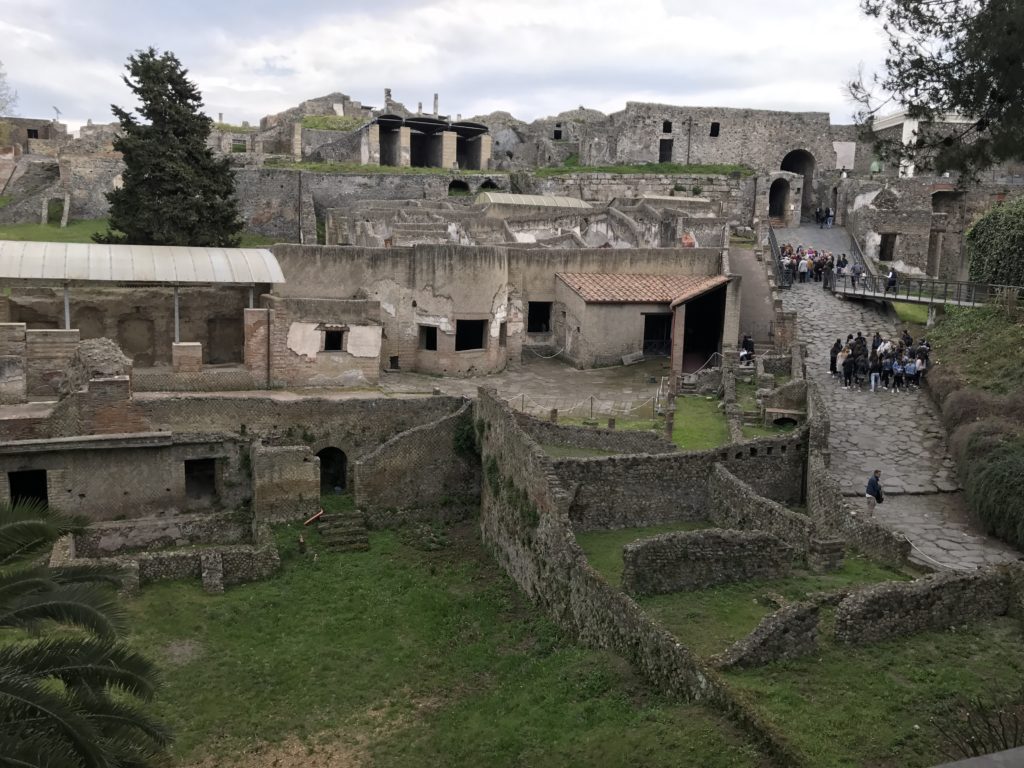
At a glance, we can tell there was a water body in the area. But we know this was a river port by the evidence presented in the remains – the classic holes and hooks in the retaining walls were used to anchor boats while the crew and travelers went offshore. The river is now miles away but the port walls still stand.
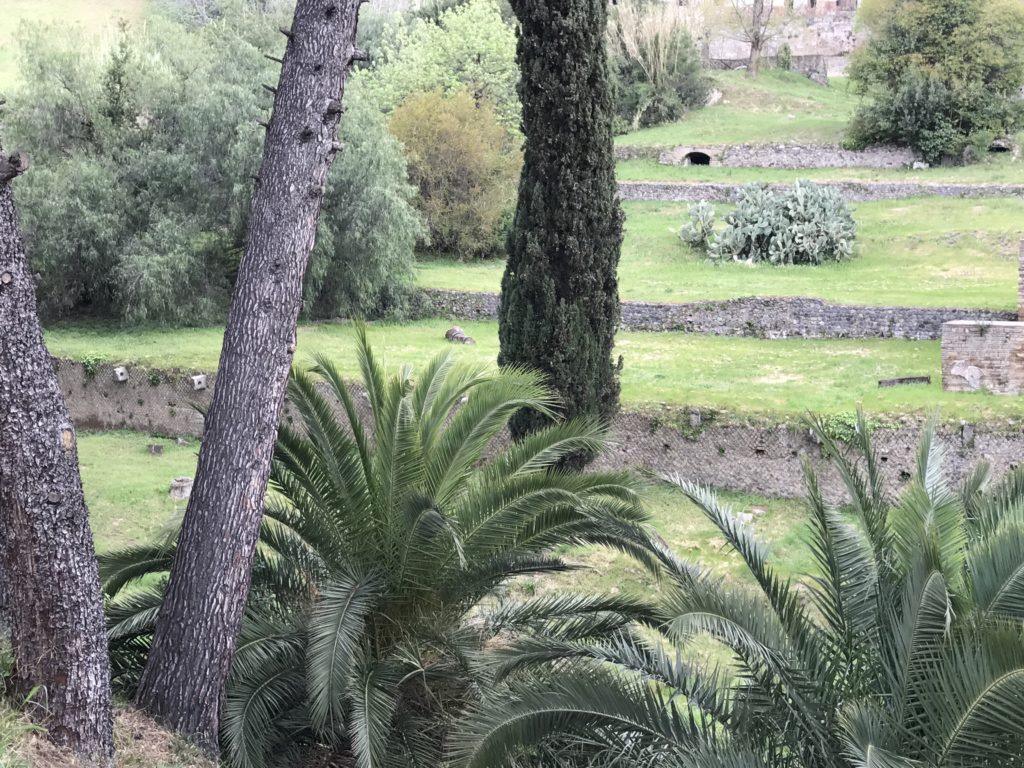
Many shops lined the busy streets of Pompeii. The grooves left from wooden doors indicate the entrance to a store. These groves are found in the port area, forum and throughout the city.
The Public Baths of Pompeii
The port of Pompeii provided entertainment and comfort for the traders, including the grand Roman baths on hot thermal springs. In addition, many public baths are found all over the city so all residents, visitors, and even slaves could stay clean.
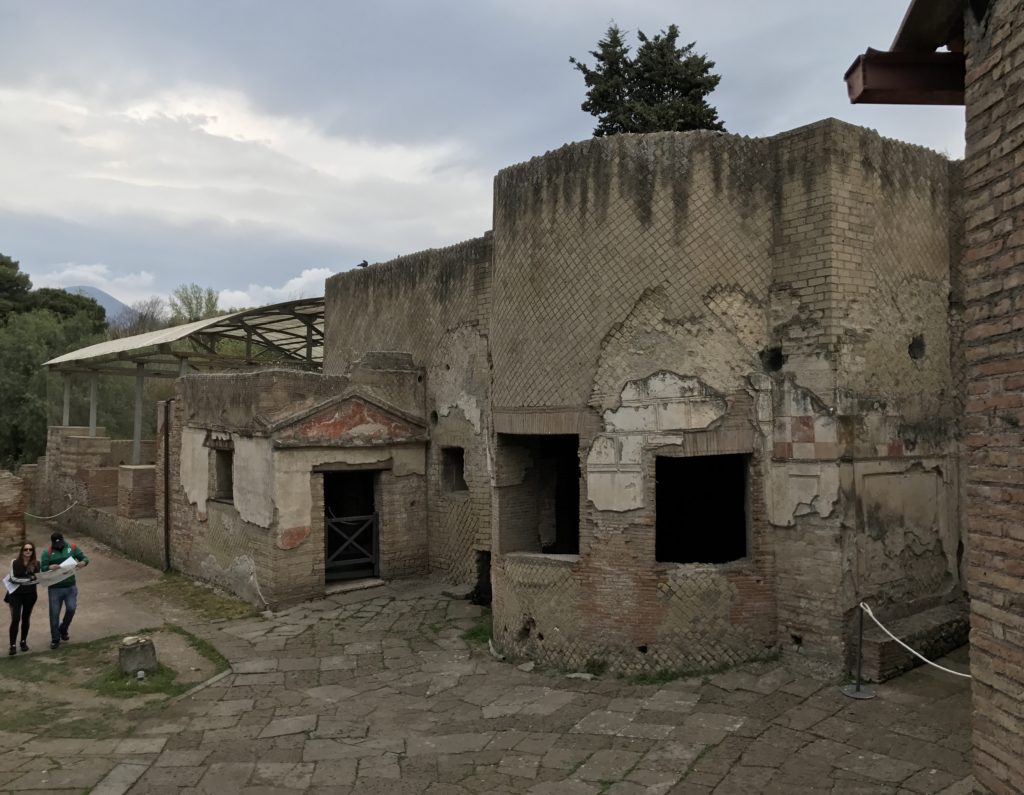
The view from this bath out to the river must have been amazing. Imagine lying in the beautiful warm bath, on a cold day, sipping a drink and looking out to the river below. No wonder Romans loved to visit Pompeii for vacations and trade.
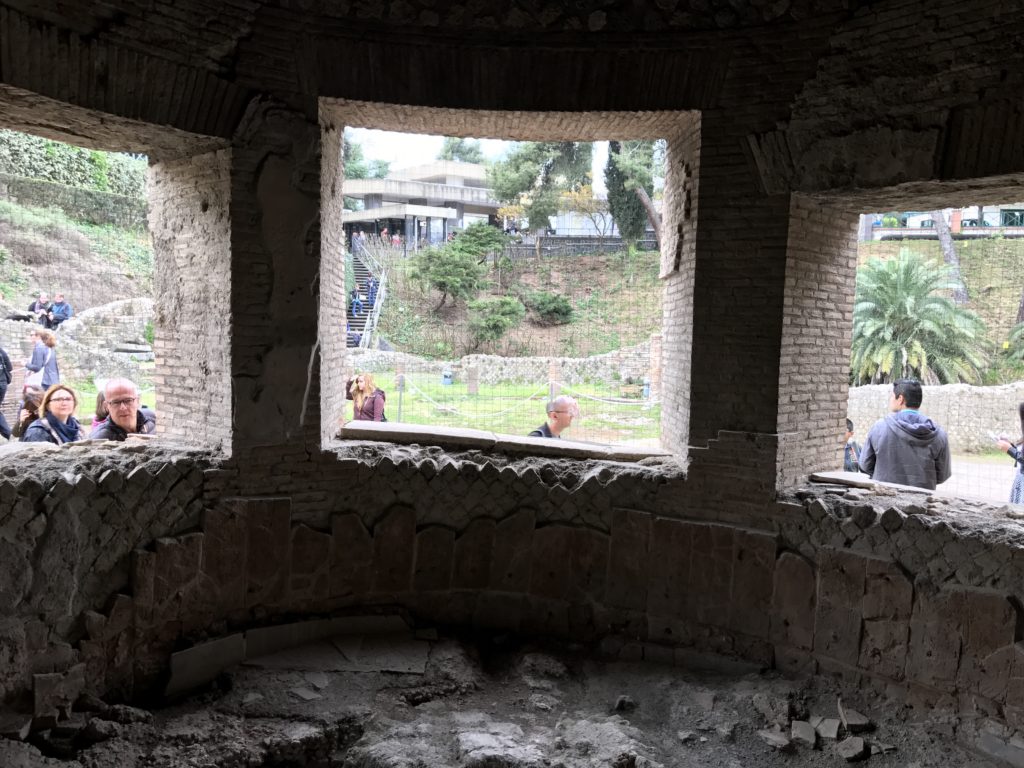
The rooms in the Roman baths were heated, as we can tell by the gap under the floor and behind the walls. The air from the furnace circulated all around the rooms and pools keeping them warm. As one went inside, the baths were progressively hotter. This was an amazing feat in times when even the wealthy in other kingdoms didn’t have water for baths.
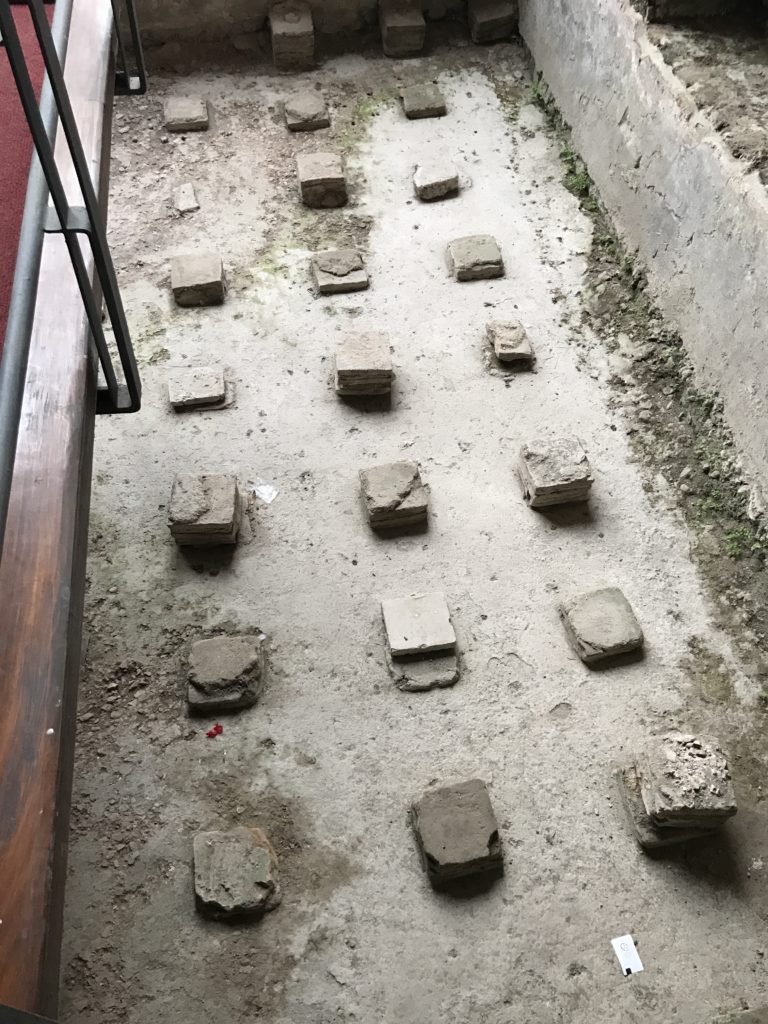
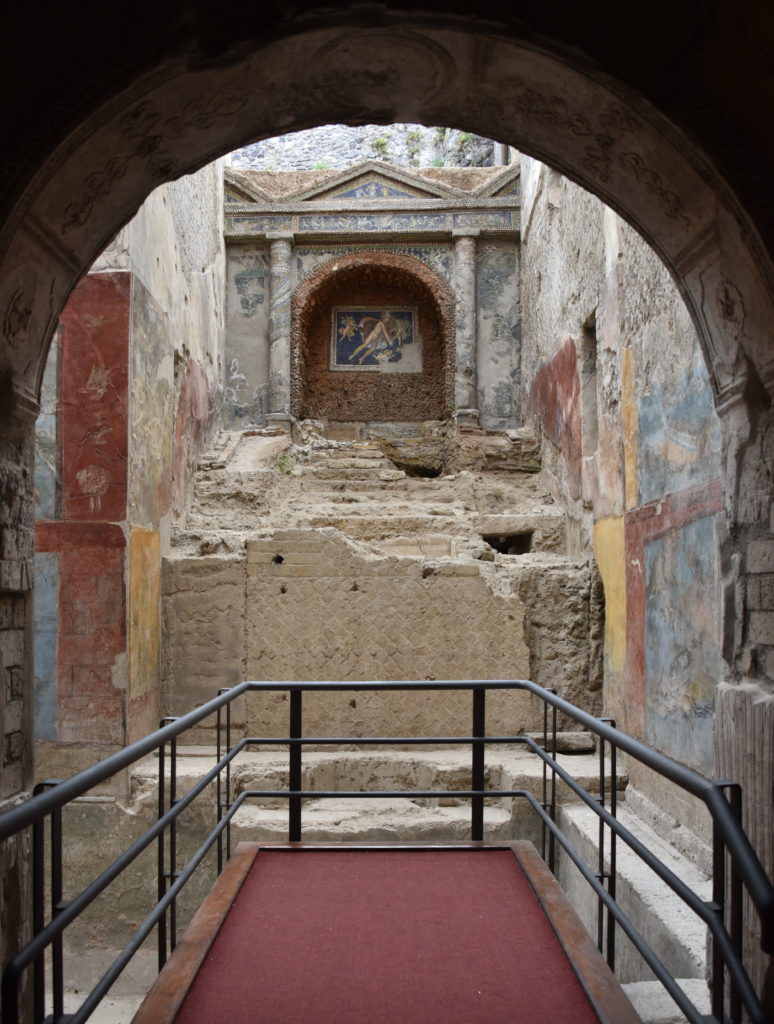
Pompeii’s Forum and Mt Vesuvius
Like all Roman cities, Pompeii has a large Forum, the city’s center for government, religion, trade, and commerce. This was the hub of the city. People gathered here to discuss politics, worship, work, trade, shop, socialize, argue or just hang out… and do the modern-day equivalents of getting coffee, taking selfies & pictures, etc. We feel it’s busy now, but it must have been busier then.
Every Pompeii starts at the Forum, today and in the Roman times. Now we see the ruins with the overarching Mount Vesuvius. We can only imagine the grand Forum that provided an equally majestic foreground.
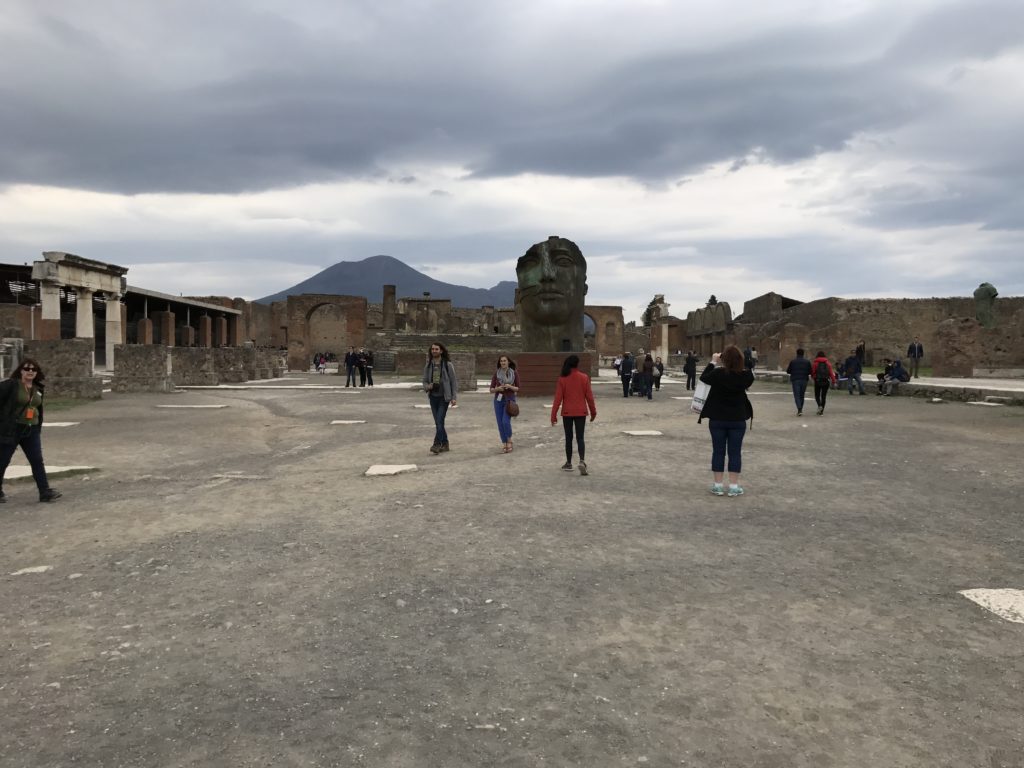
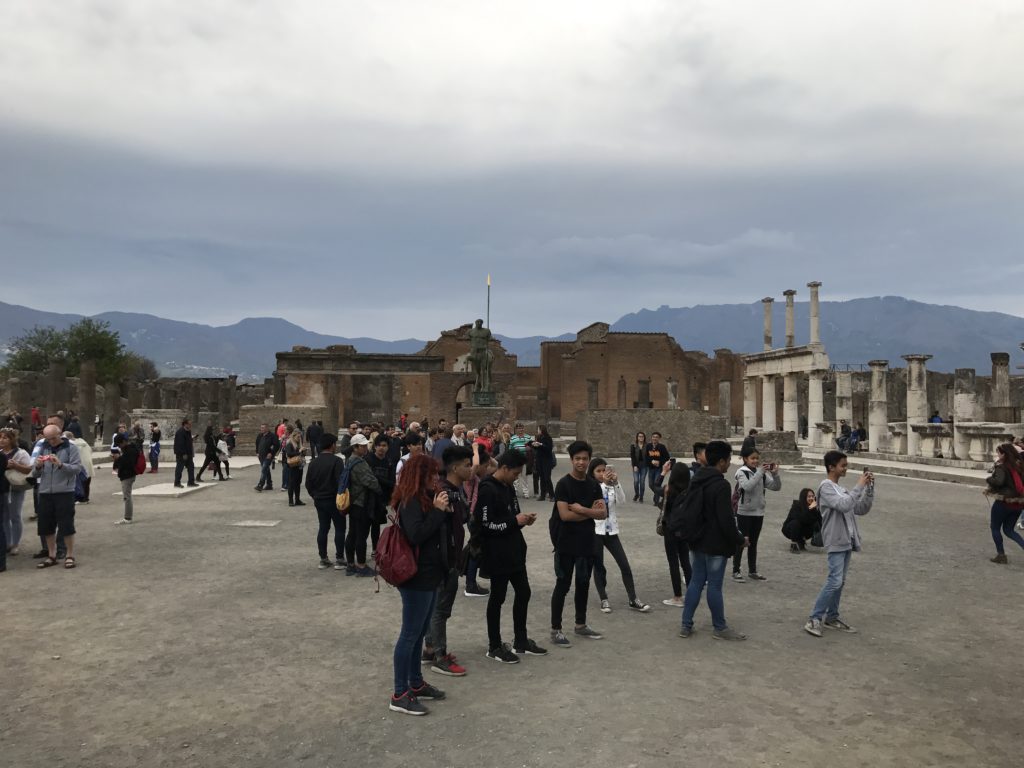
Democracy in Action
Like the rest of the Roman Empire, Pompeii was a democracy where Romans voted and elected their government officials.
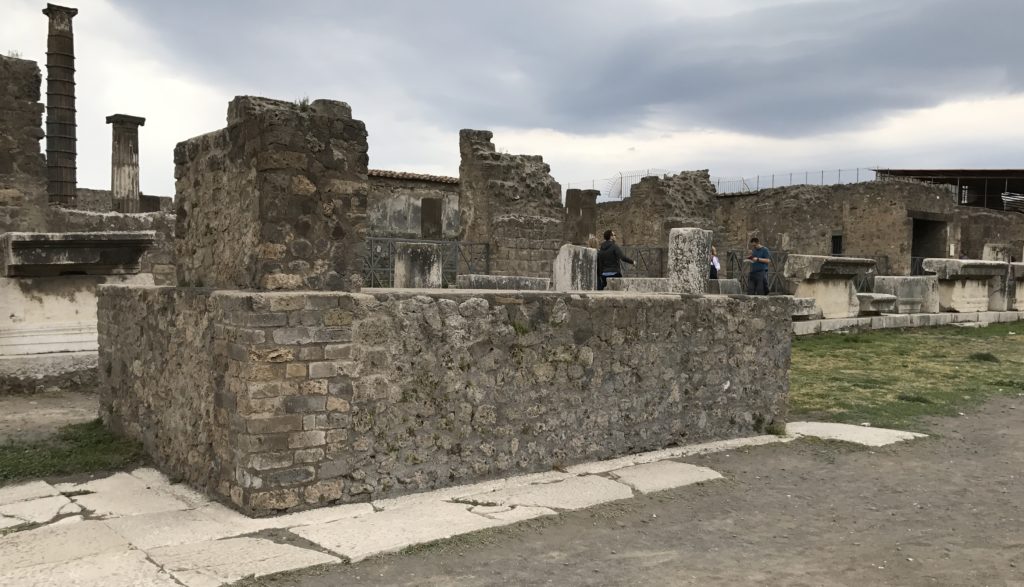
It may have been easier for the candidates to say what they wanted without fear of being recorded and played back days or years later.
Pompeii’s Marketplace
The Forum at Pompeii was also the hub for business and trade. A large space was occupied by the buzzing marketplace.
The ornate carvings around the entrance gate of the wool and cloth market (and many other sites) were made by chisel and hammer! It must have taken many skilled slave artists a long time to make the Roman cities. Some carvings still remain to the delight of anyone visiting Pompeii today.
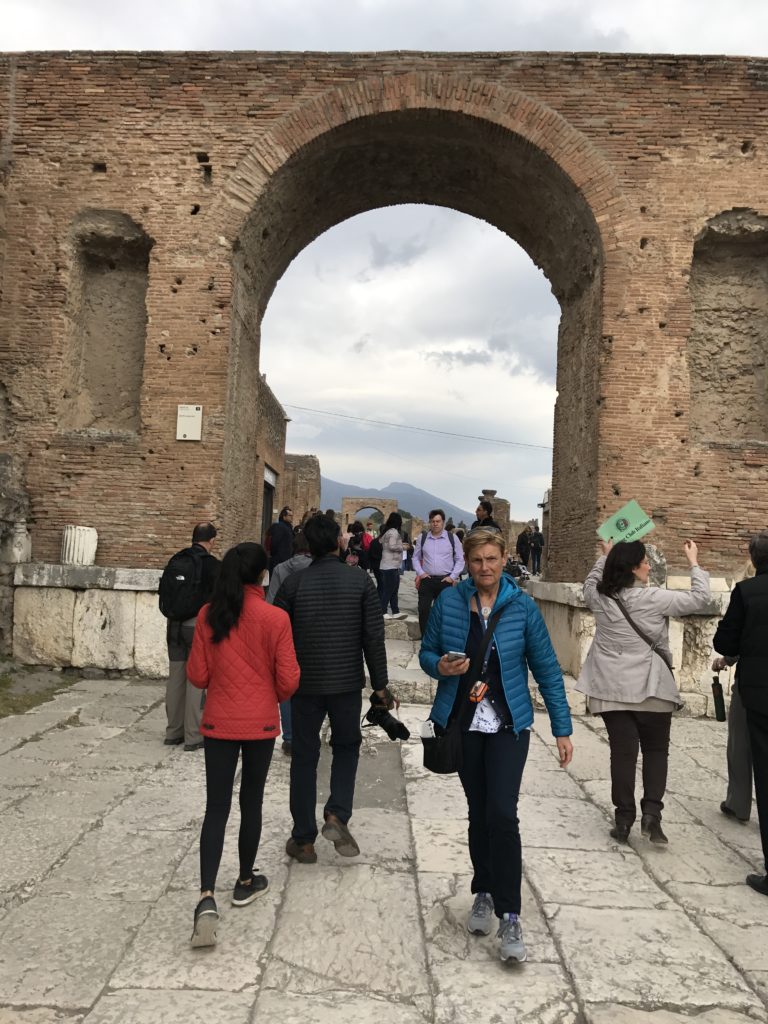
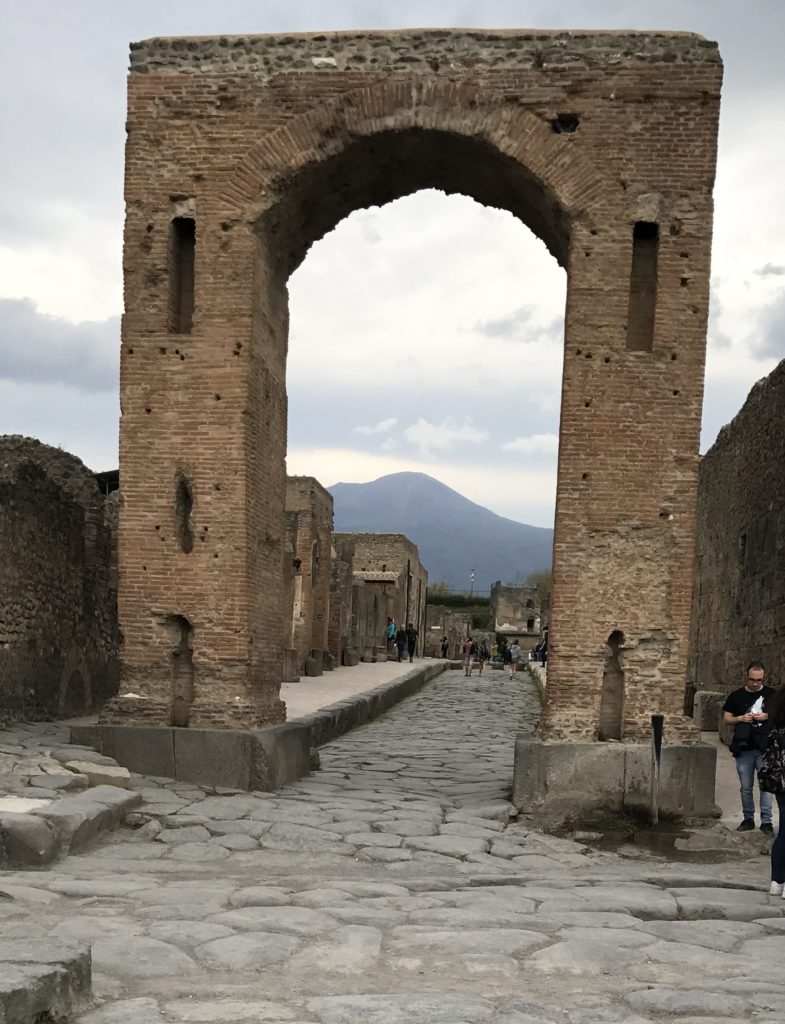
Columns Around the Forum
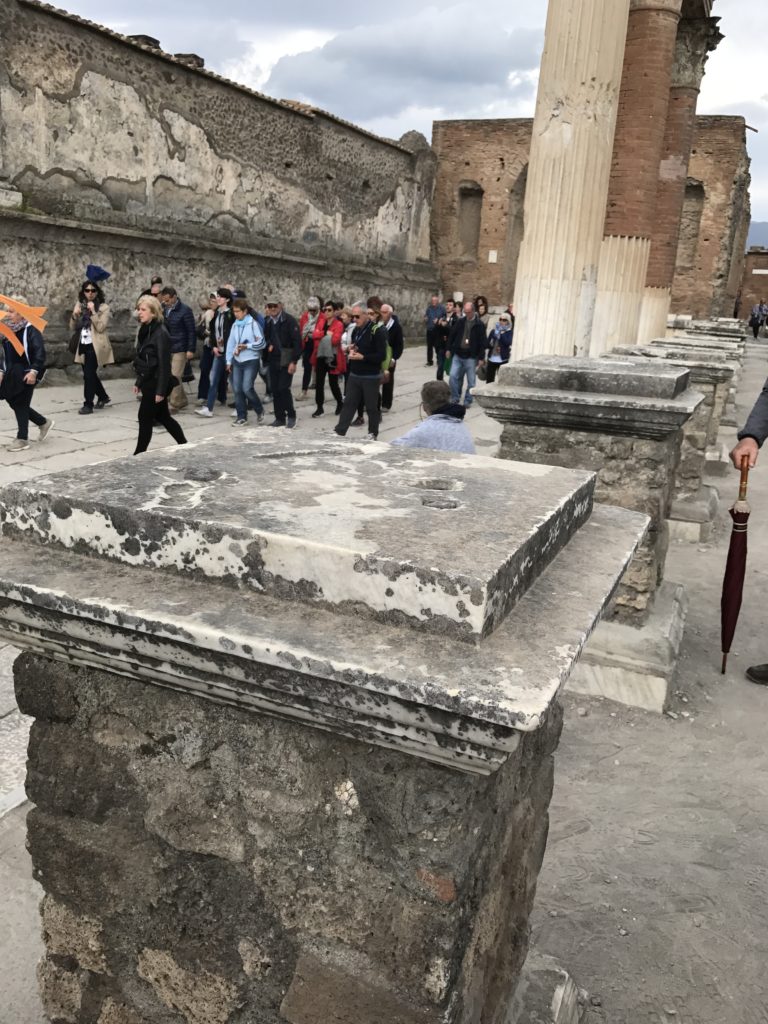
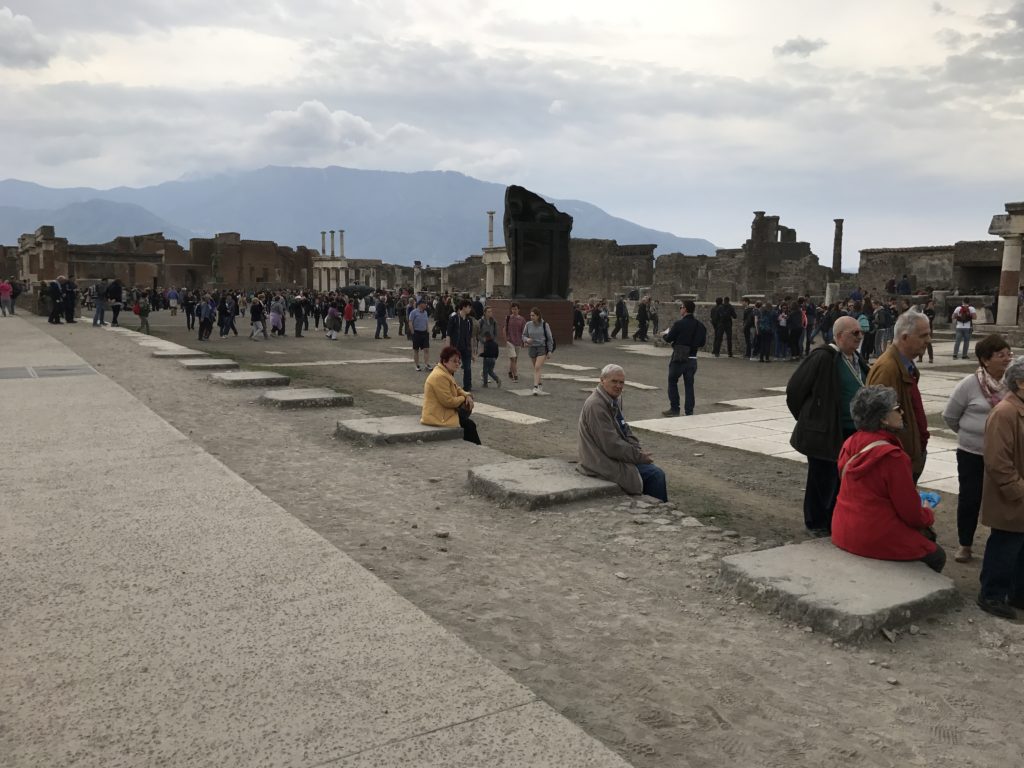
Temples in Pompeii
The temple of Apollo, one of the most important temples in Pompeii, goes far back to the 6th century BC, well before the Romans arrived. So, it shows architectural features of both Italic and Greek origin and it sticks into the Forum. It was further enhanced under the reign of Nero. Its rectangular perimeter is surrounded by an astonishing 48 columns! The main altar and the sacrificial pedestal are in the center. On the right is the statue of Apollo shooting an arrow and to the left is the statue of Diana/Artemis. In the center by the alter is a sundial for telling the passage of time
Roman Infrastructure in Pompeii
One of the gifts from Romans was ‘water’ and ‘personal hygiene’ which we now take for granted. Romans provided water to all their citizens in their entire empire, which was unheard of in other countries back then. Pompeii is no exception. They built aqua ducts underground to bring water to the masses. In Pompeii the aqua ducts were filled by rainwater from the streets, squares in every house and rivers. Most houses did not have running water but people accessed water from the public fountains, little well holes in the house and the thermal public baths. Everyone took hot water baths, even slaves. So, Romans had a longer life expectancy (35 years) than people that lived before and after.
Roads to Visit Pompeii
In the classic Roman style, Pompeii has straight roads, perpendicular to each other and made with the black igneous volcanic rock. The roads made it easy to visit Pompeii and to travel within the city.
Some roads still have fragments of marble and other precious rocks. The roads are lower than the side streets to serve as water drainage. The rocks form paths for the residents to cross without getting wet. The gaps between the rocks are for wheels. Near the forum the road is quite shallow, maybe there was more water further downhill where the roads are deeper. The roads are different widths – 3, 2, or 1 rock wide based on their location and usage.
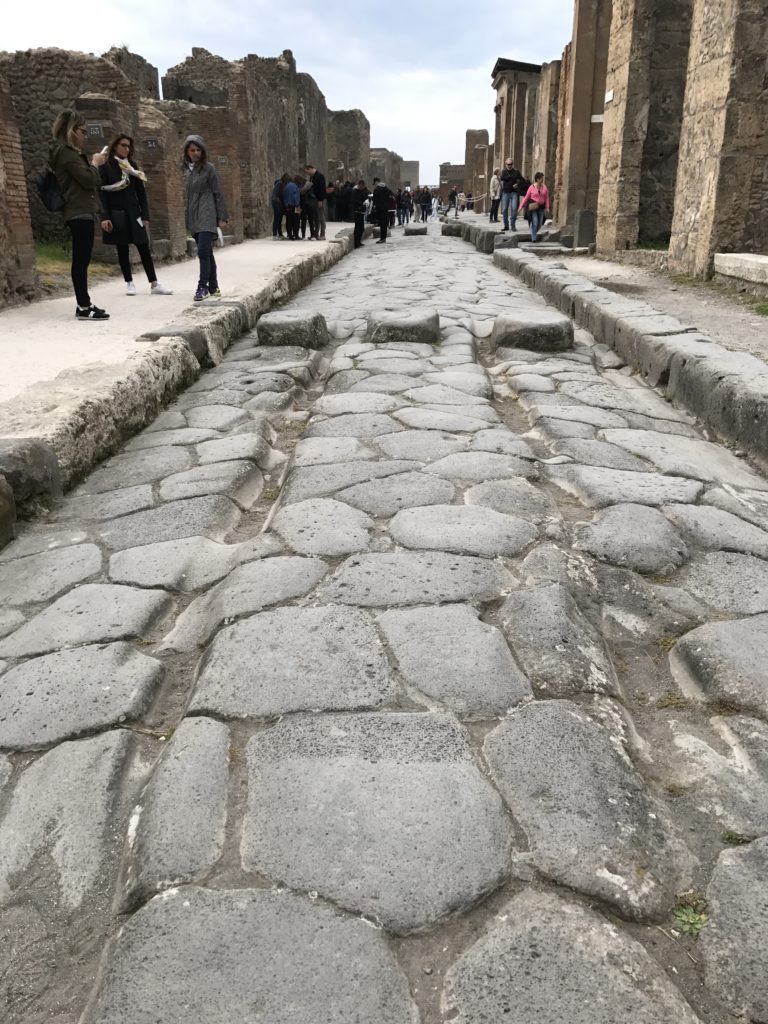
As the carriages drove through the streets, they made grooves in the road. This is how we can tell how busy a once road was. So why are grooves deeper on the incoming roads of intersections?… because the speeding carriages need to brake harder to stop and dig deeper marks 🙂
Water Systems in Pompeii
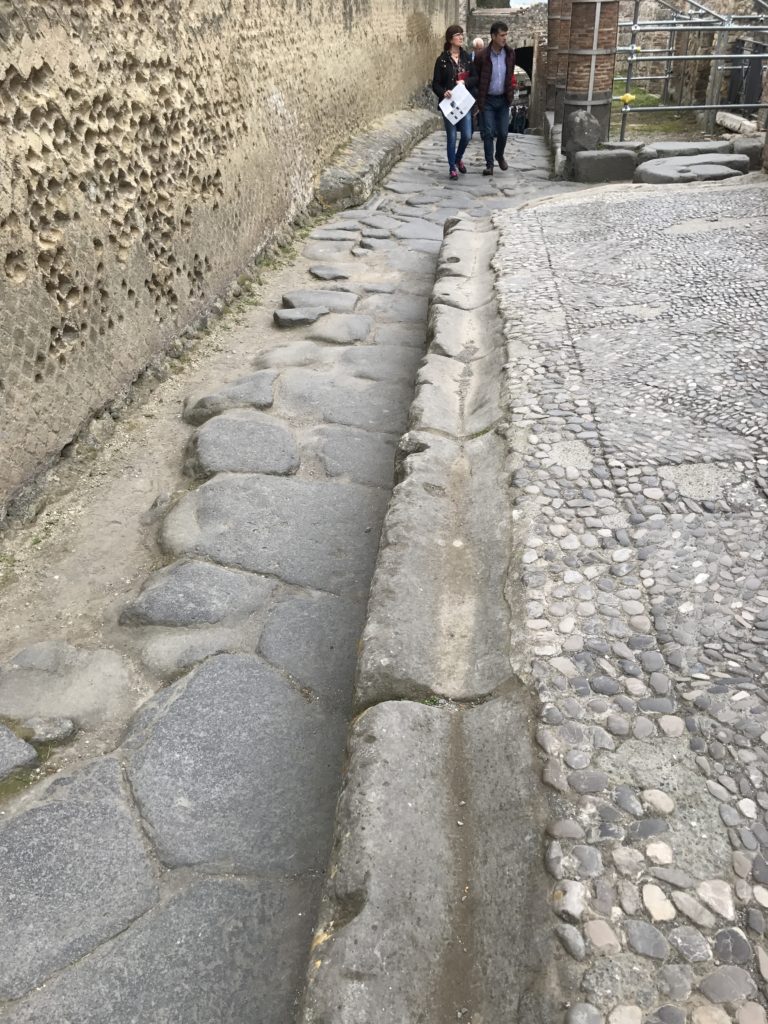
All the houses had a square central area with an open center, surrounded by rooms, just like the aangans in our ancestral homes in Rajasthan, India. Rain collected in these squares and fed the underground aqua ducts. The little circular hole was then used to get water from the aqua duct, sort of like a well. Similar to Rajasthan homes, the second floor was open in the middle too and rain gutters from the second floor fed water into this square too. It would have been so much fun for kids to come out and play in the rainwater gushing from the rain gutters like we remember doing as children.
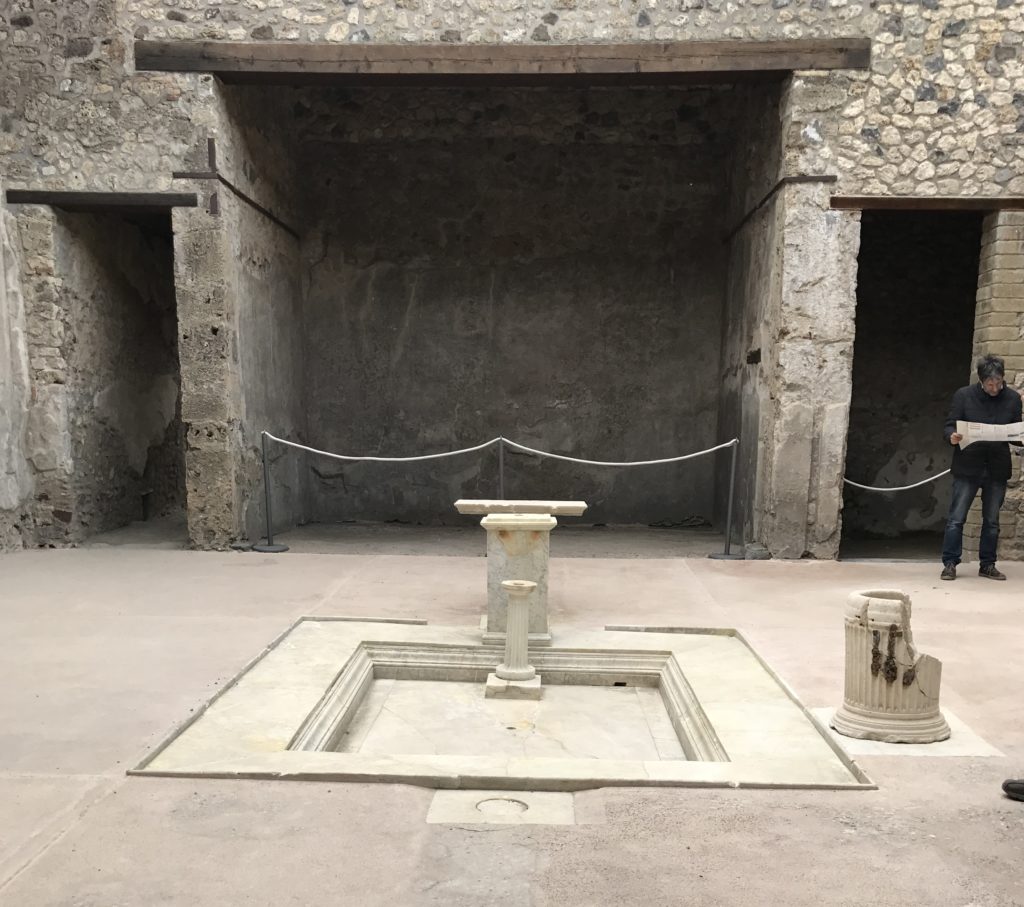
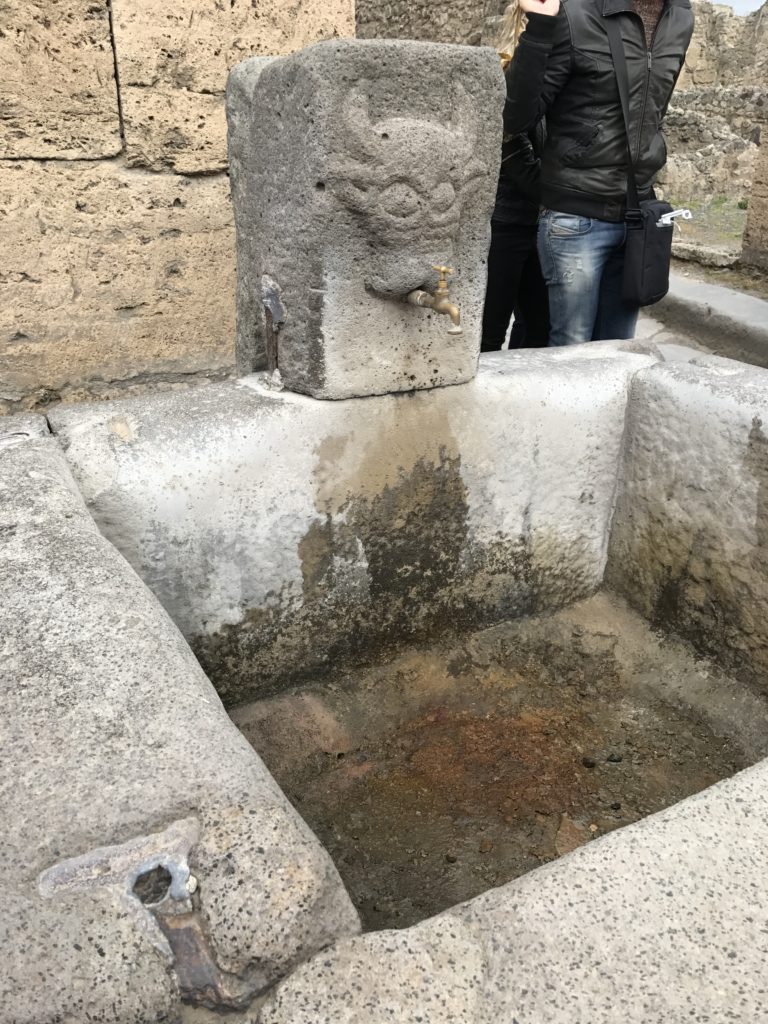
Even today Roman water fountains are a source of delightful, cool water when we visit Pompeii, especially in summer.
Construction Styles
When you visit Pompeii, notice the many exposed walls. It’s fascinating to see the styles and infer why they were built that way.
Throughout Pompeii, there are many wall construction styles made with bricks or rock. Different materials and styles were used based on load on the wall, location, and affordability. Richer folk could afford the bricks with mortar but ordinary people would use just rocks.
Living in Pompeii
At the time of Mount Vesuvius’s eruption, about 20,000 people lived in this summer tourist destination of ancient Rome. Life must have been good for the Roman citizens as we can tell by the infrastructure, houses, bakeries, and restaurants.
The House of Faun
The House of Faun is one of the largest and most ornate houses in town. This house is a must-see when you visit Pompeii.
The center square now displays the Faun (Half Man Half goat) statue. It’s surrounded by many rooms for guests and entertaining. To the right is a section for slaves, the kitchen and operations of the residence. Further up are family residences, gardens and the famous tile art depicting a battle scene with Alexander the Great.
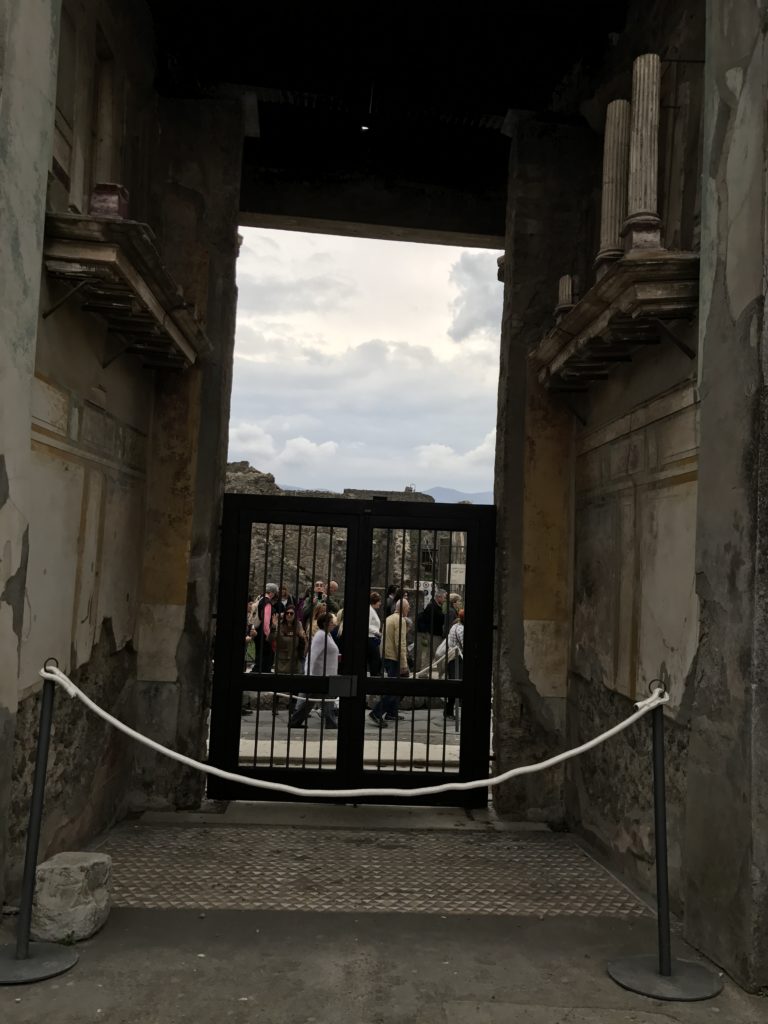
The Alexander Mosaic is a masterpiece from 100BC. It depicts a fight scene in the Battle of Issus between Alexander the Great and Darius III of Persia. It was made with 1.5 Million tiny pieces of colored marble, each stone laid out show the perfect lighting and shadow effect, facial expressions on the men and horses. The details are truly remarkable. It must have been commissioned by a very wealthy owner and decorate the entrance of his house to showcase his wealth and power.
Like other works of art, the original is preserved in Naples museum. This reproduction was a herculean effort in itself that took 22 months and 2M tiny tiles and many artists. Its showcased in the House of Faun in Pompeii.
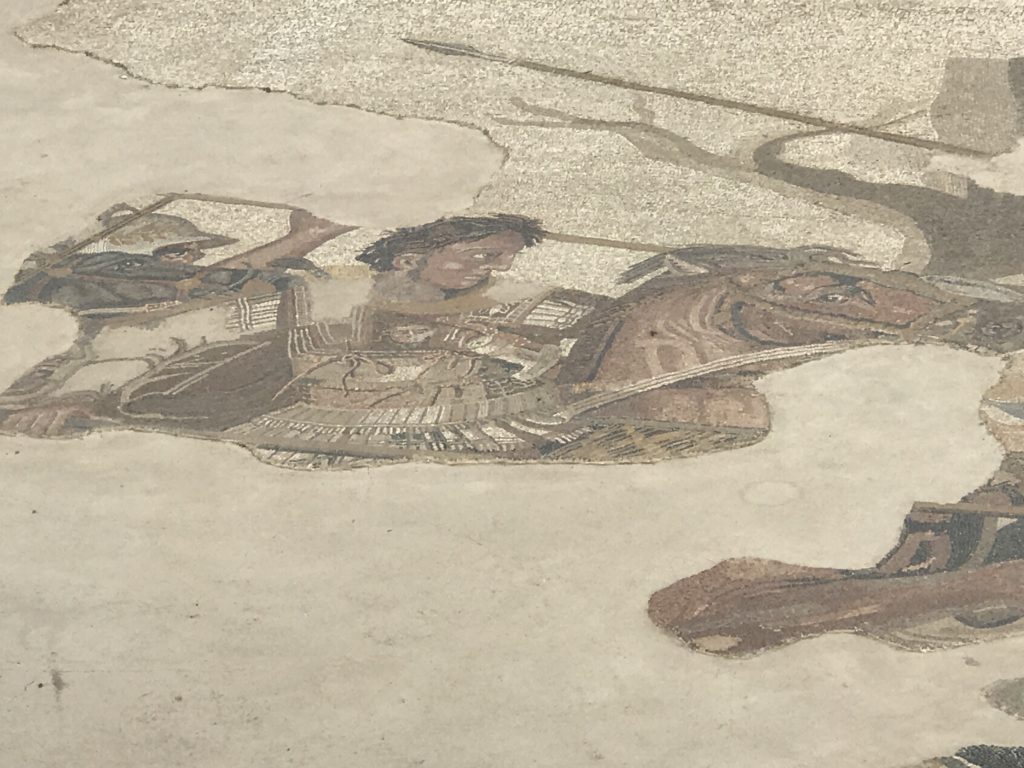
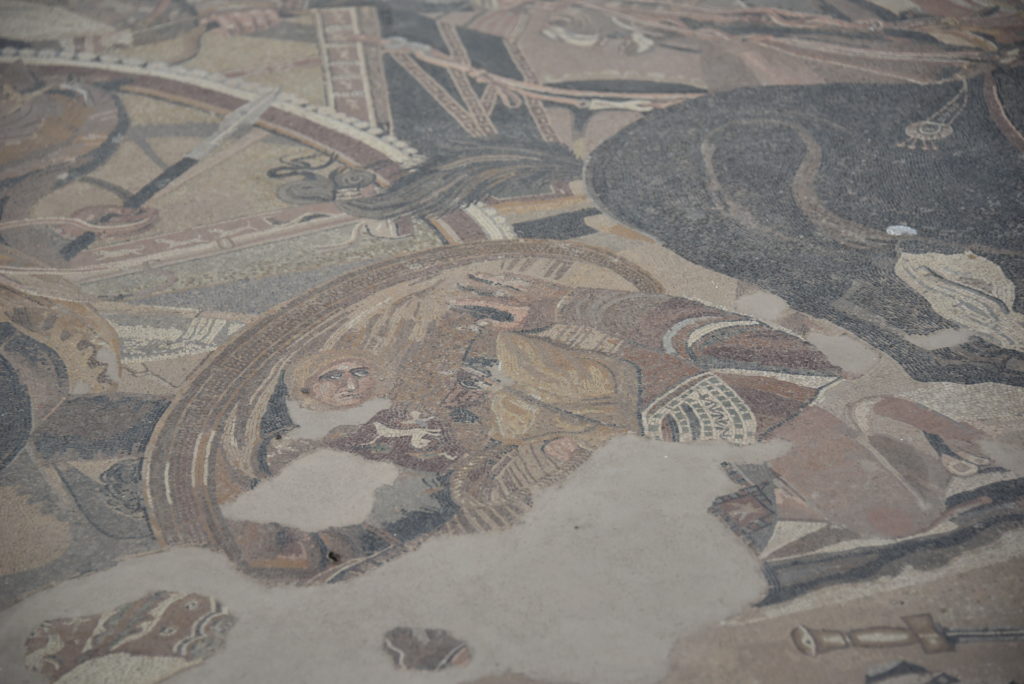
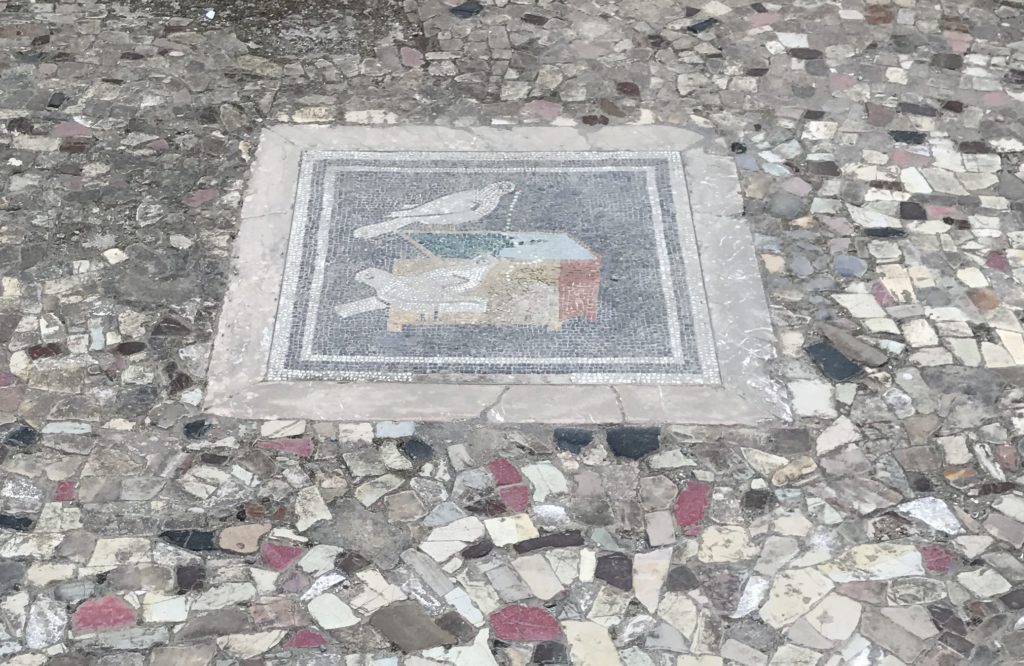
Tile Mosaics in Pompeii
Most houses had beautiful mosaics at the entrance. The mosaic told a lot about the owner of the house – their philosophy, status, wealth etc.
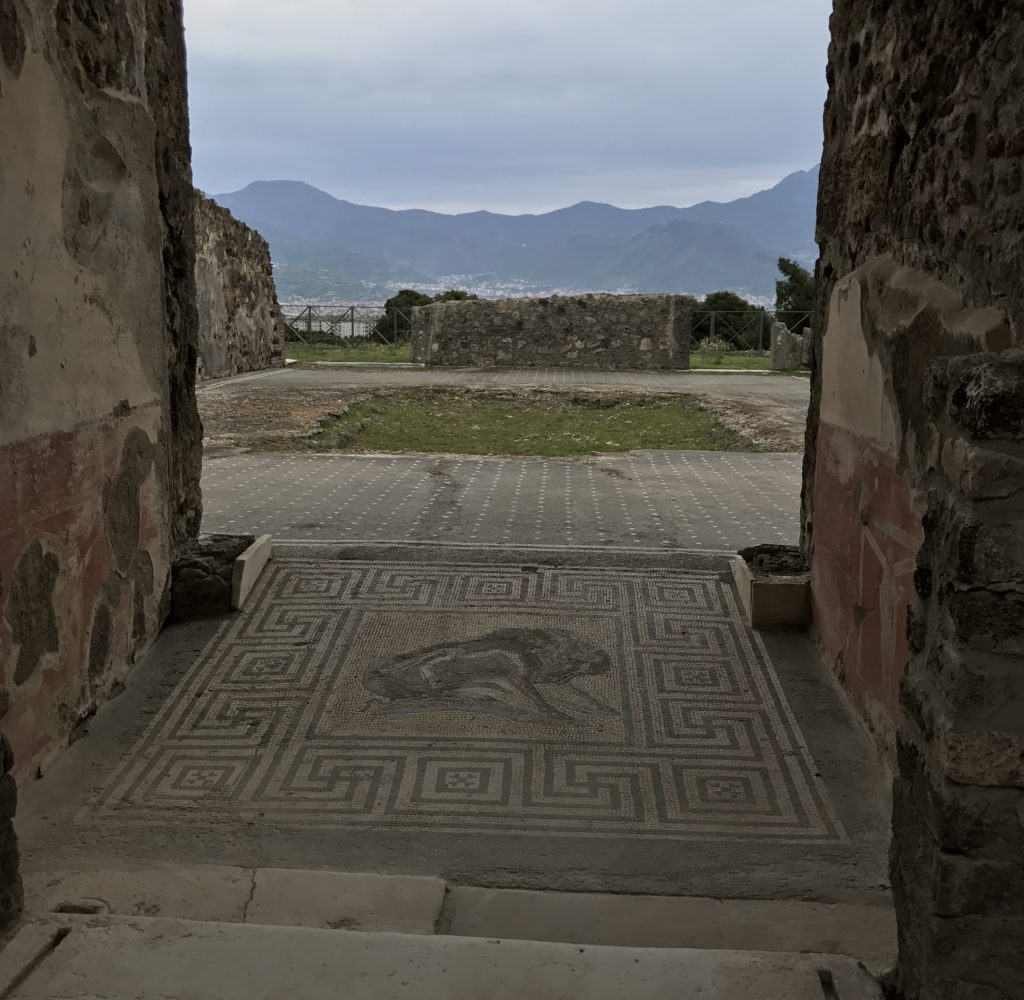
A Pompeii house with a view. The entrance is decorated with a mosaic of a lion-like voracious animal.
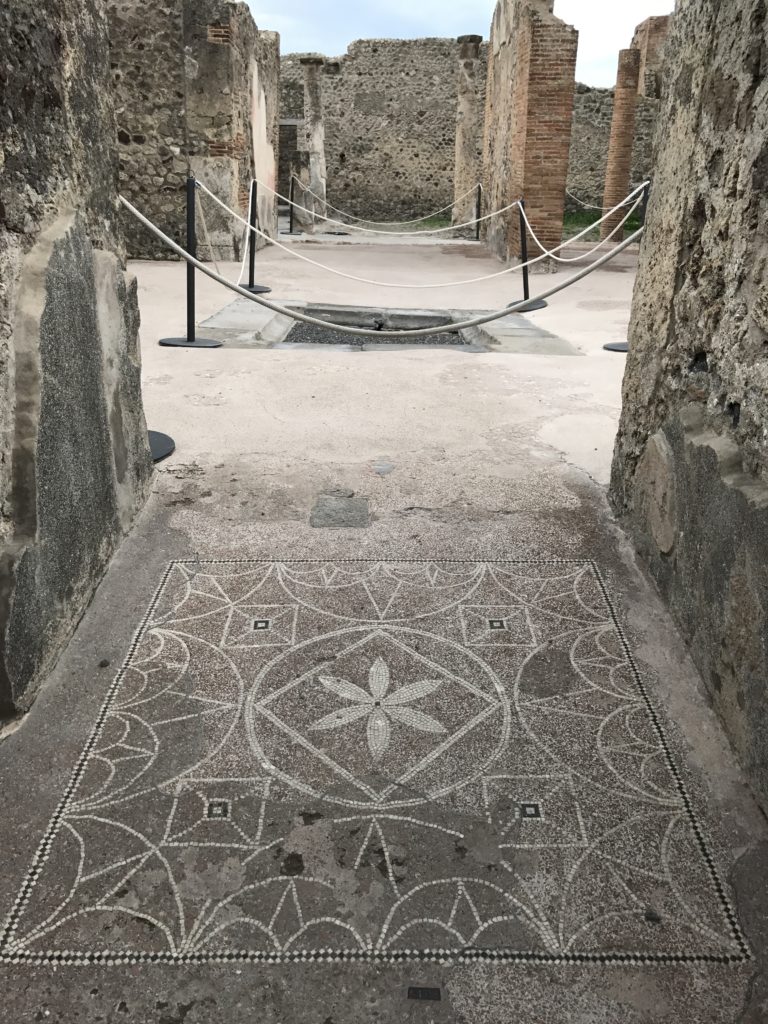
San Francisco’s mosaic steps are a modern-day take on tile art.
Every Day Living in Pompeii
During our visit to Pompeii, we noticed that most houses still have beautiful paintings in their rooms. If Pompeiians were anything like Romans, they had spartan rooms with no wall hanging and minimal furniture. But the walls were painted beautifully to transform you to another place or mood.
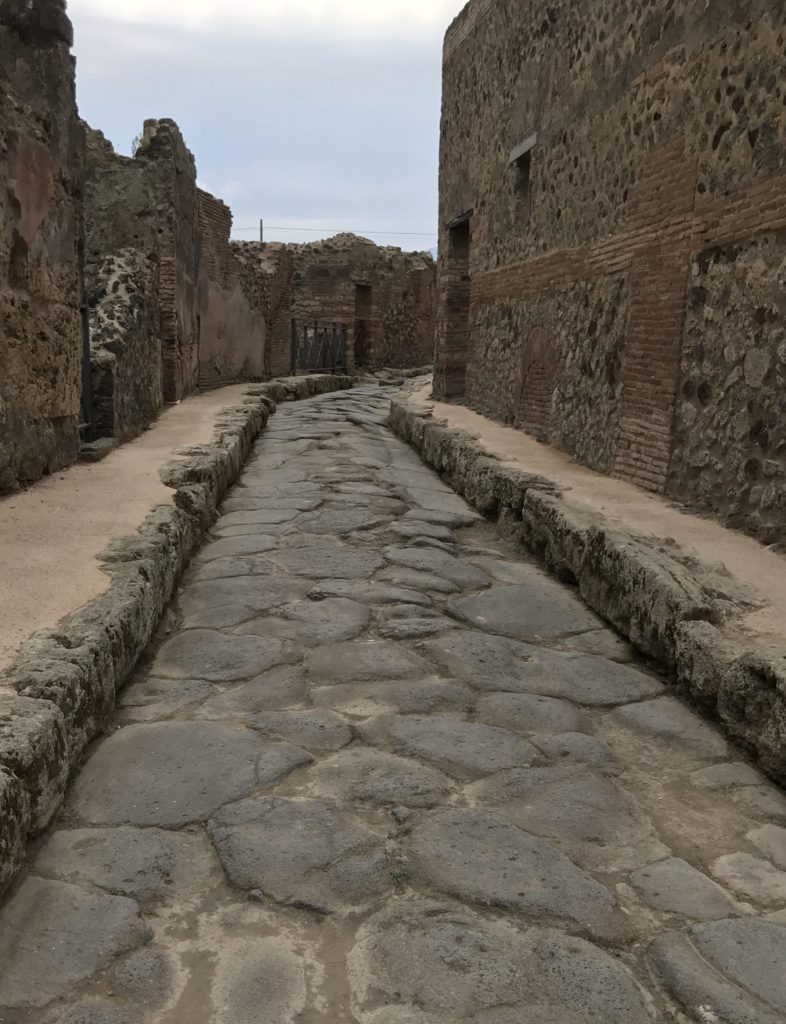
All streets have names so when you visit Pompeii, you can find your way around town. Every Roman street was straight, but this looks curved because of the pano effect from my iPhone).
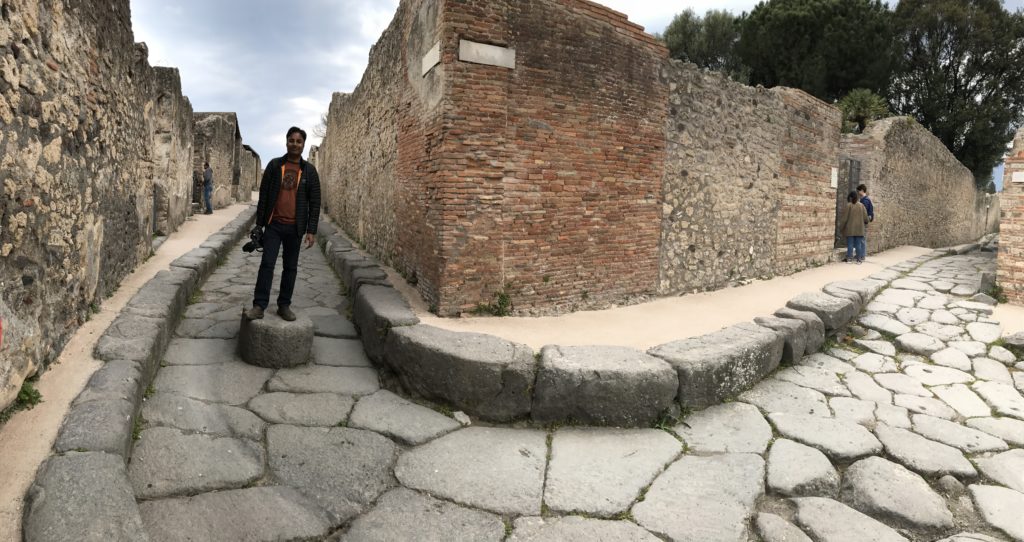
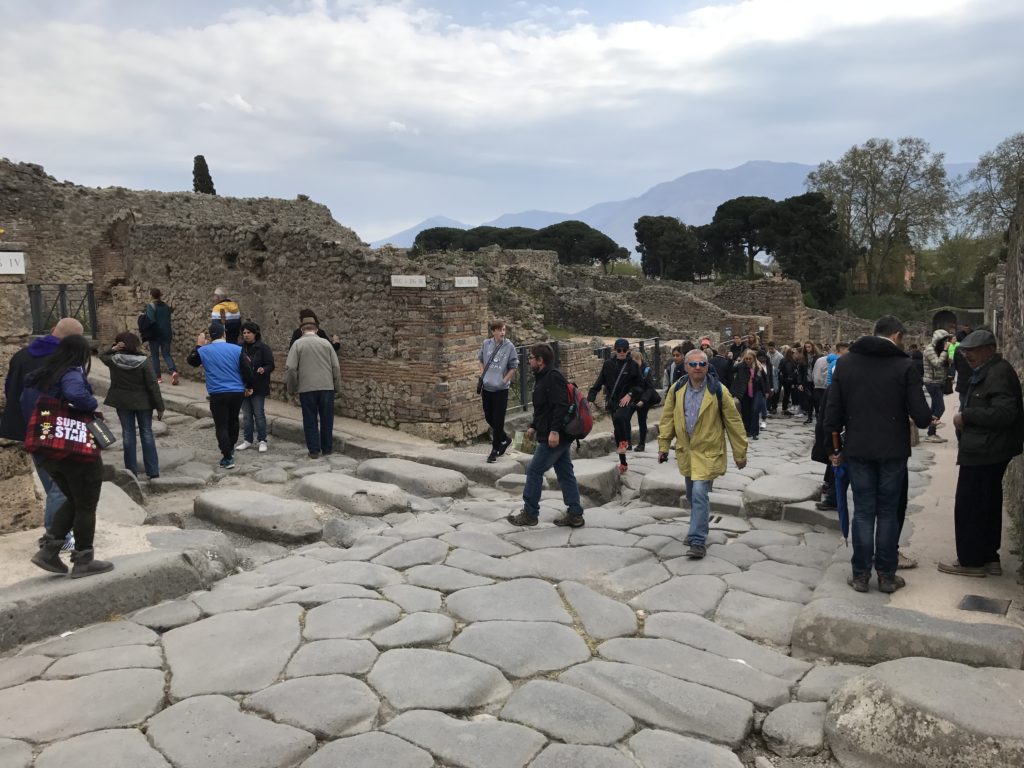
Amazingly, many houses have names of their owners in 79BC, based on archaeological findings in the house and records. Some of the names are still common in Italy after 2000 years!
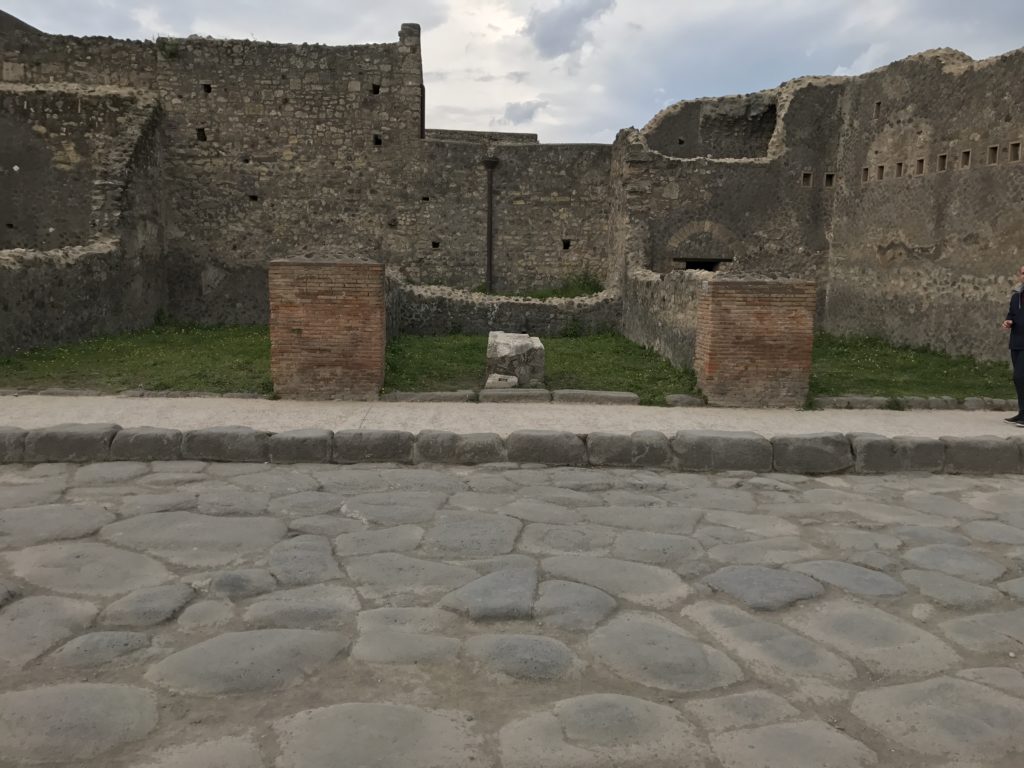
Many middle-class houses seem to have a shop on the first floor and residence on the second floor.
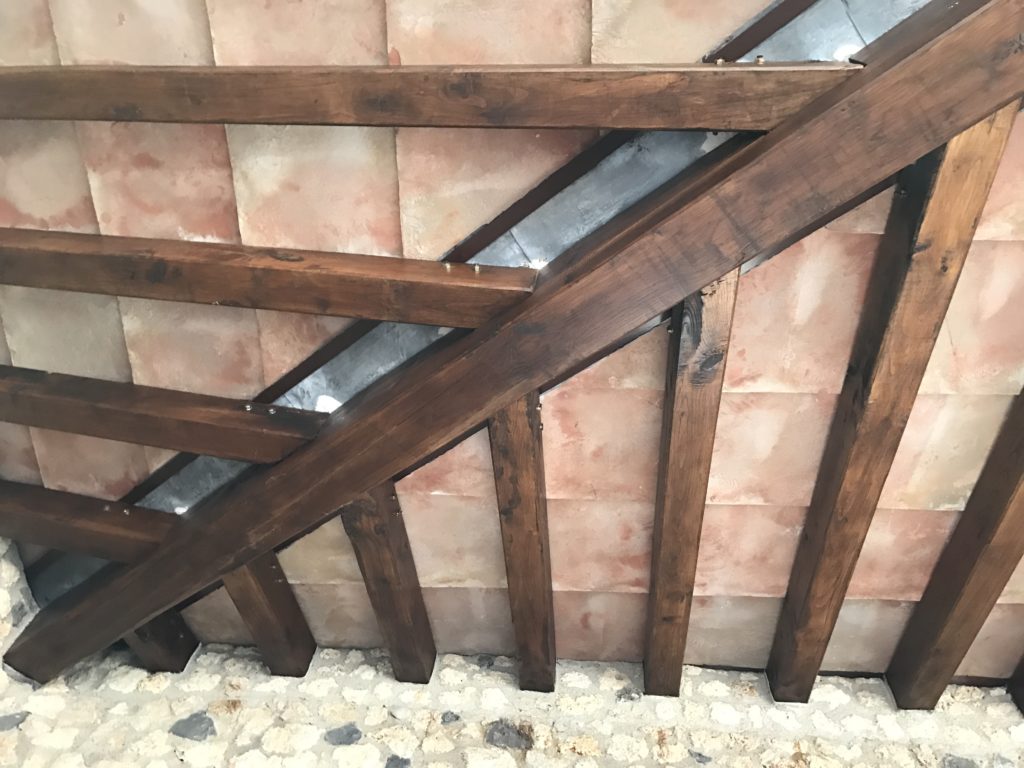
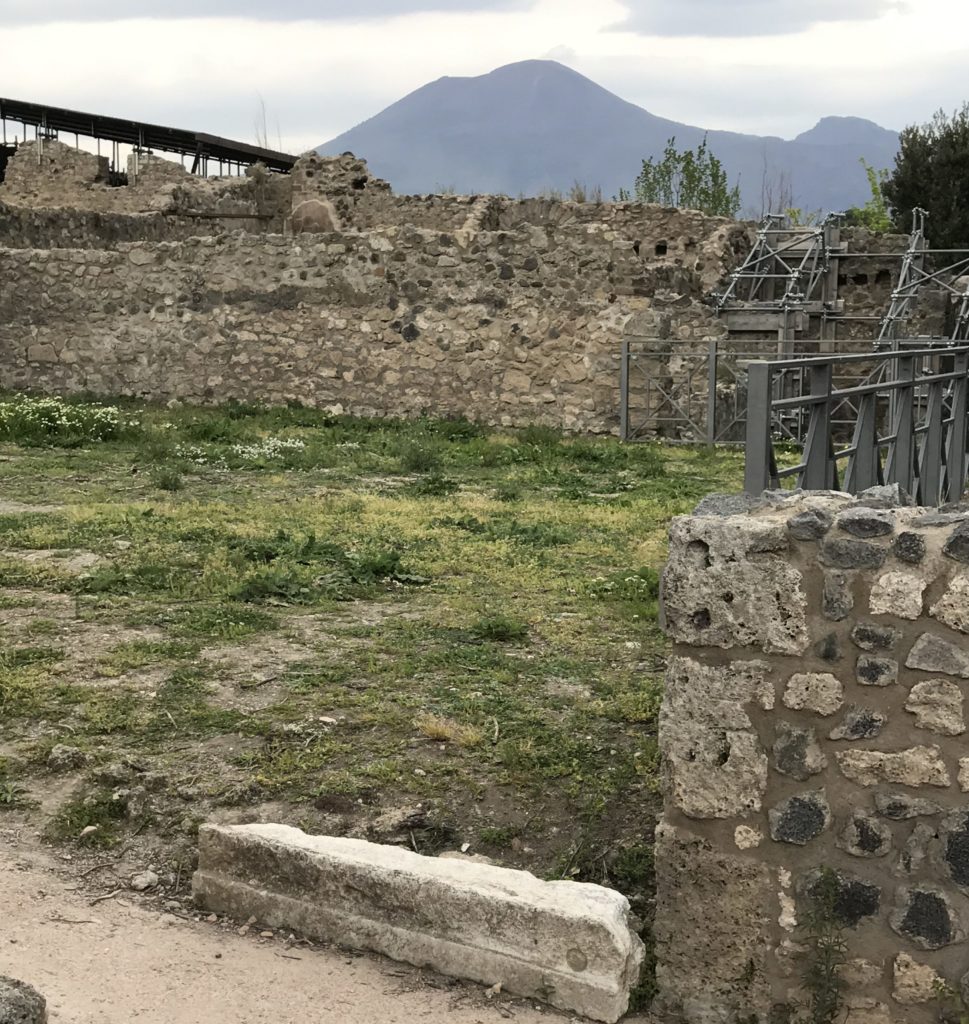
Dining in Ancient Pompeii
The people of Pompeii seemed to eat out and buy their bread from bakeries like this one.
There were 14 such bakeries in Pompeii. Workers started baking very early in the morning. The bakeries probably had a large staff to grind grains and nuts, knead dough, shape bread, bake, package, deliver bread, and cleanup.
On the fateful night of Oct 24th 79BC, this bakery was running full speed. The bread was in the oven and later found by archeologists.
Most people ate bread, cheese, eggs, and olives. Some could also afford fish, meat, and cake.
The ovens in Pompeii are pretty much the same as modern-day commercial ovens, except they were not electric or gas. They were wood-burning ovens, like their namesakes today.
A typical grain grinder had the two holes in the middle section held long wooden poles. A person would pour grains from the top while grinder was rotated using the wooden poles. Flour would fall out from between the two rocks into a circular container which would be placed where Nirmal is standing.
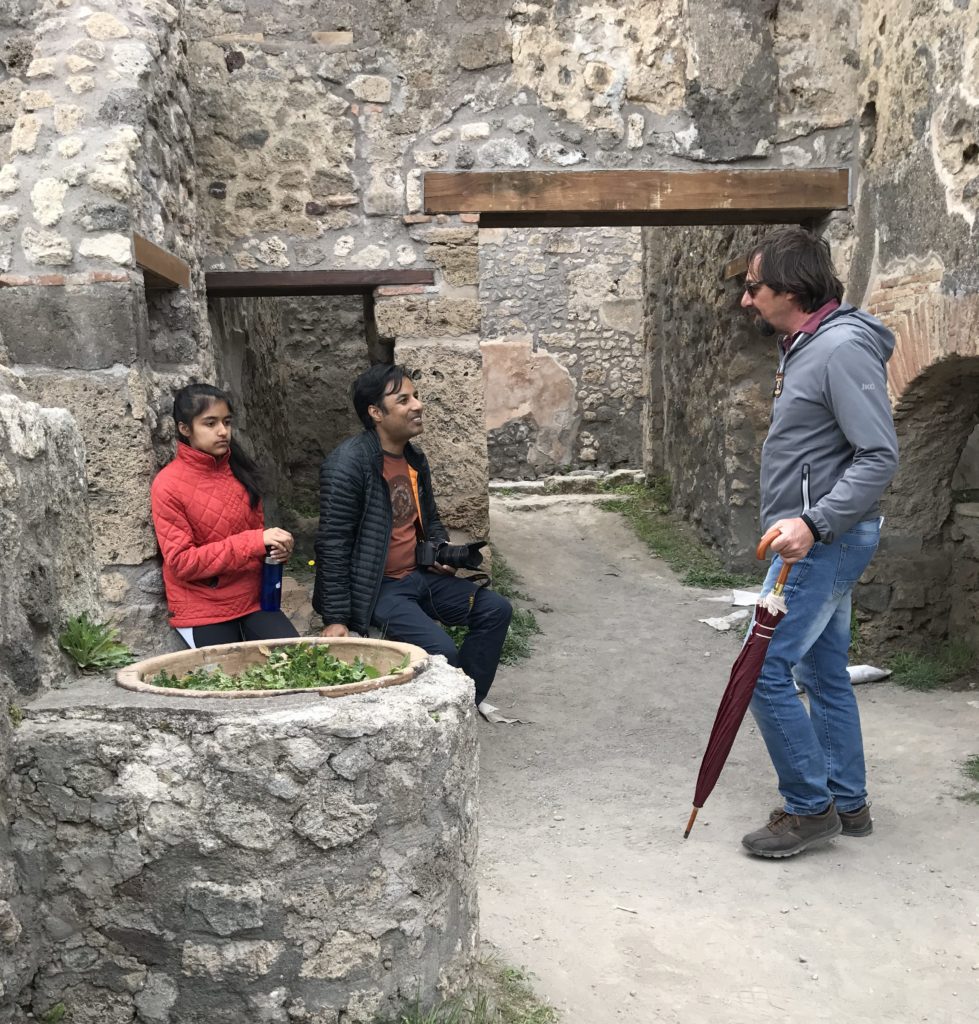
In the second house we visited in Pompeii, there was a storage urn in the front, an oven on the right, more rooms straight ahead and staircase on the left, leading up to another floor. It was nice to sit down and listen to stories of what life must have been back then.
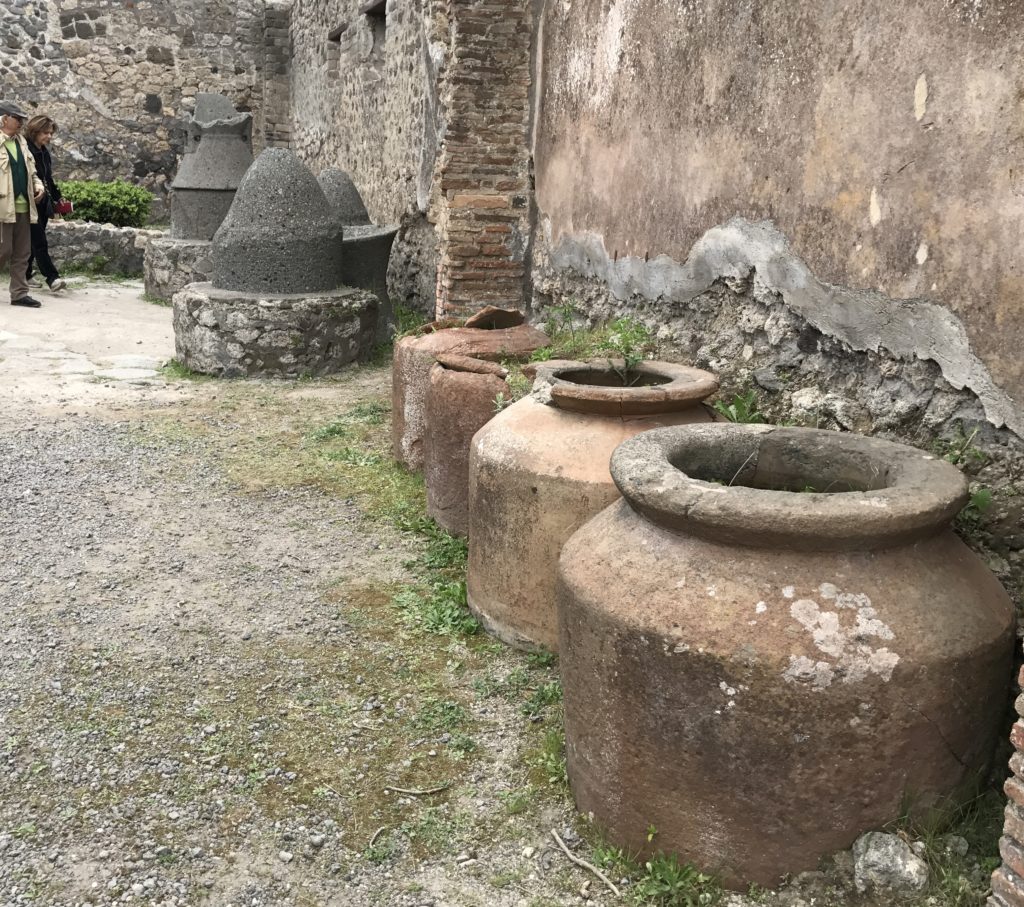
During our visit to Pompeii, we saw many objects that one could guess.
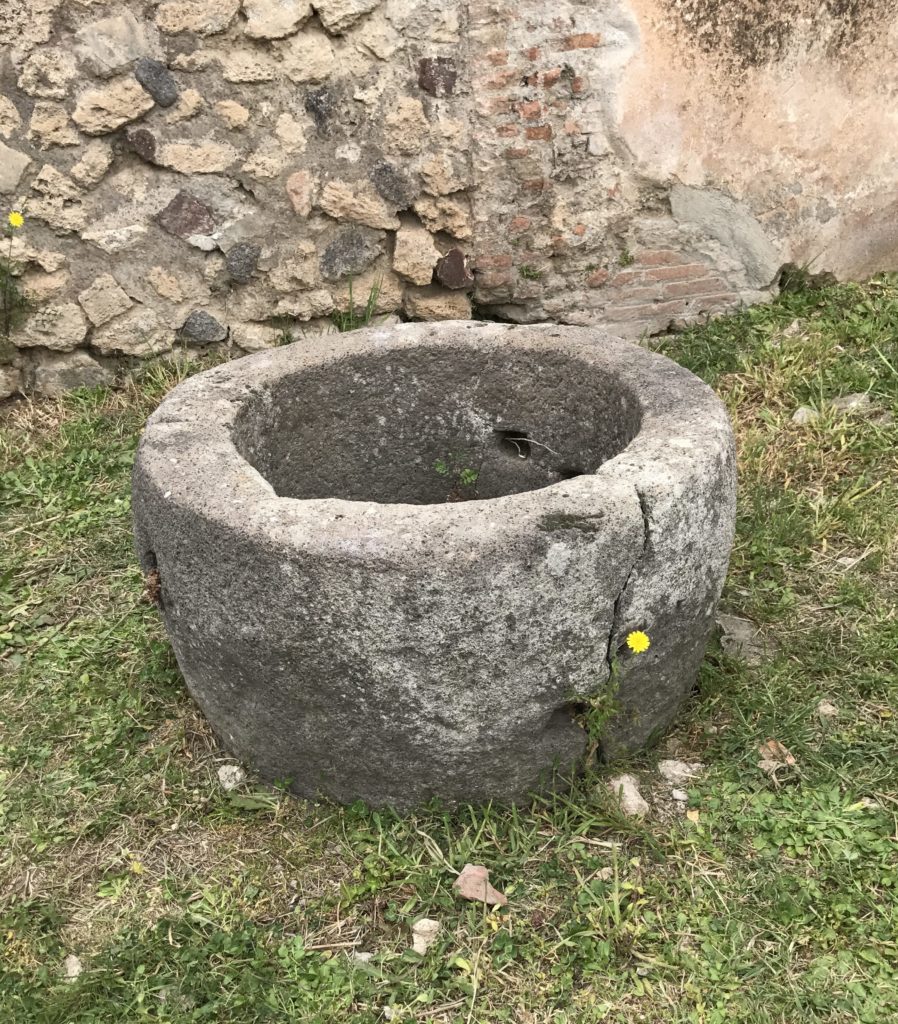
Extra-Curricular Activities in Pompeii
Gymnasiums for Fitness
Fitness was very important to the Pompeiians. Here is an example of a gym. It was beautifully decorated with pictures on all the walls to make space look larger and make workout fun.
Temples for Worship
Pompeii had many temples dedicated to the various Roman and Greek gods. Some of them are in the forum area and others spread around town.
The entrance to the temple of Isis has a dedication inscription at the top. After the massive earthquake of AD62, the reconstruction was financed by freedman Numerius Popidius Ampliatus. Hence the dedication to his six-year-old son ‘Celsinus’. Pompeii was still recovering that earthquake when the volcano of Mount Vesuvius erupted. The many earthquakes should have been considered warnings for the upcoming eruption.
Amphitheater for Gladiator Fights
Like other Roman cities, Pompeii had an amphitheater for gladiator fights.
At times the gladiator performance got very violent. One time a brutal fight broke out between fans of Pompeii and Nocera, killing many spectators. So the senate banned gladiator fights for a decade. But, after just three years, gladiator fights were restored by Roman emperor Nero, on the request of Poppea (from Pompeii). This shows how important this form of entertainment was for Romans. Imagine banning football in Texas if fans get into an argument!
Theaters for Performing Arts
Pompeii had two theaters for live performances. Both the theaters were made in the Greek style using the natural slopes and majestic mountain views. The seating was organized in Roman systems of classes and section. The small theater could house 1,000 spectators and had a covered roof whereas the larger theater could hold 5,000 spectators.
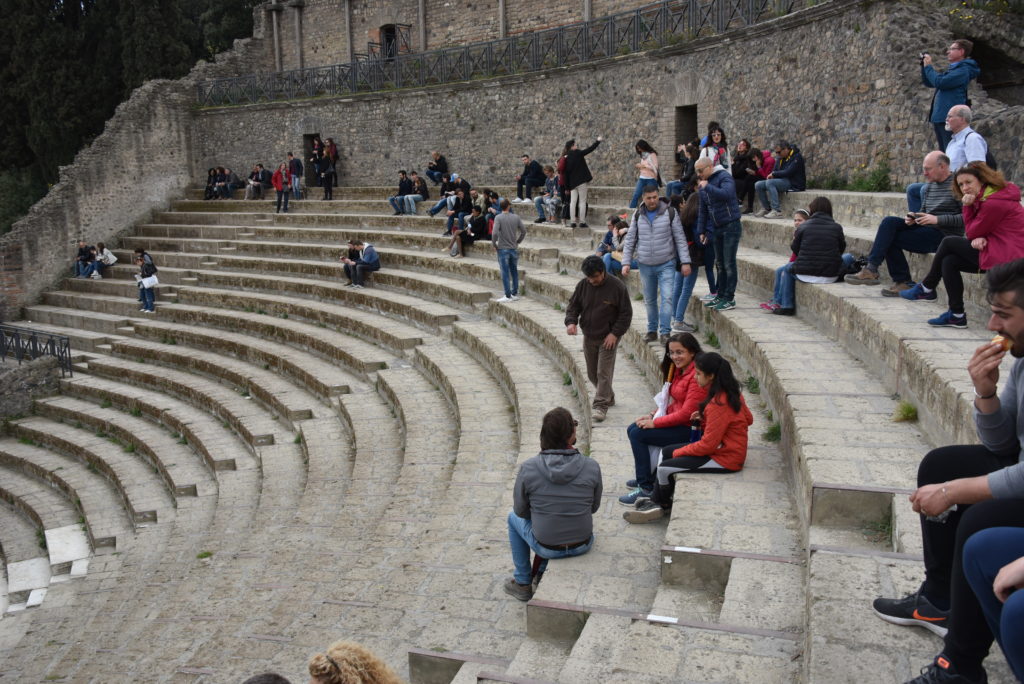
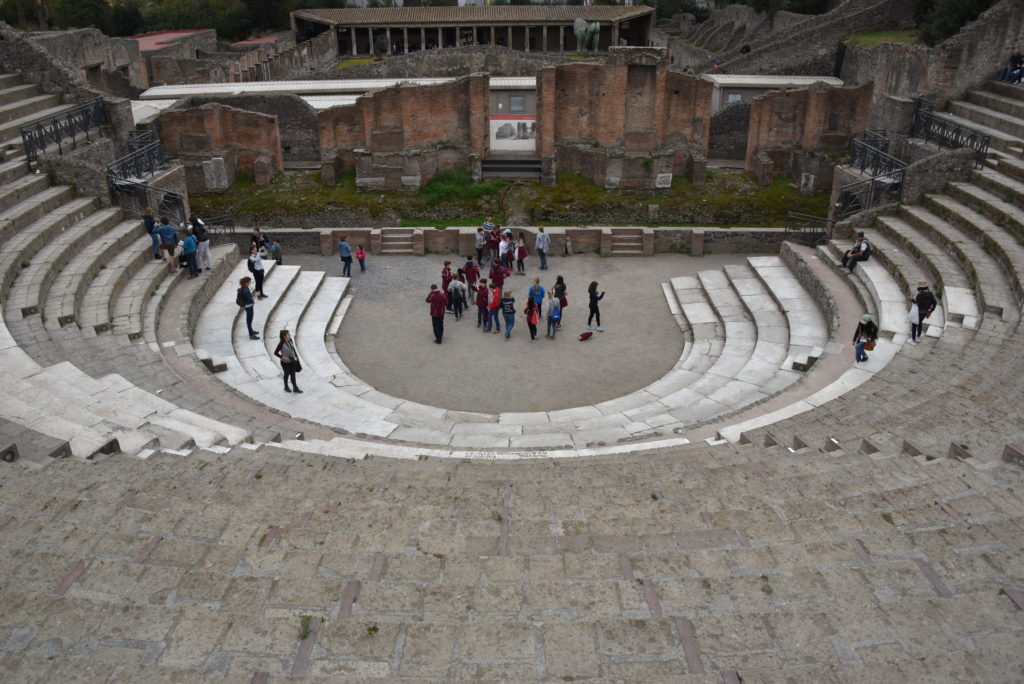
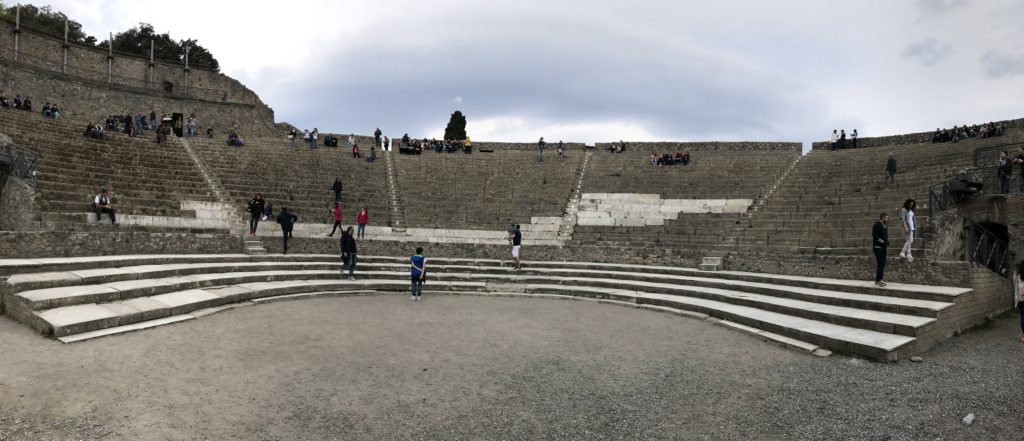
Concrete Jungle or Outdoor Fun?
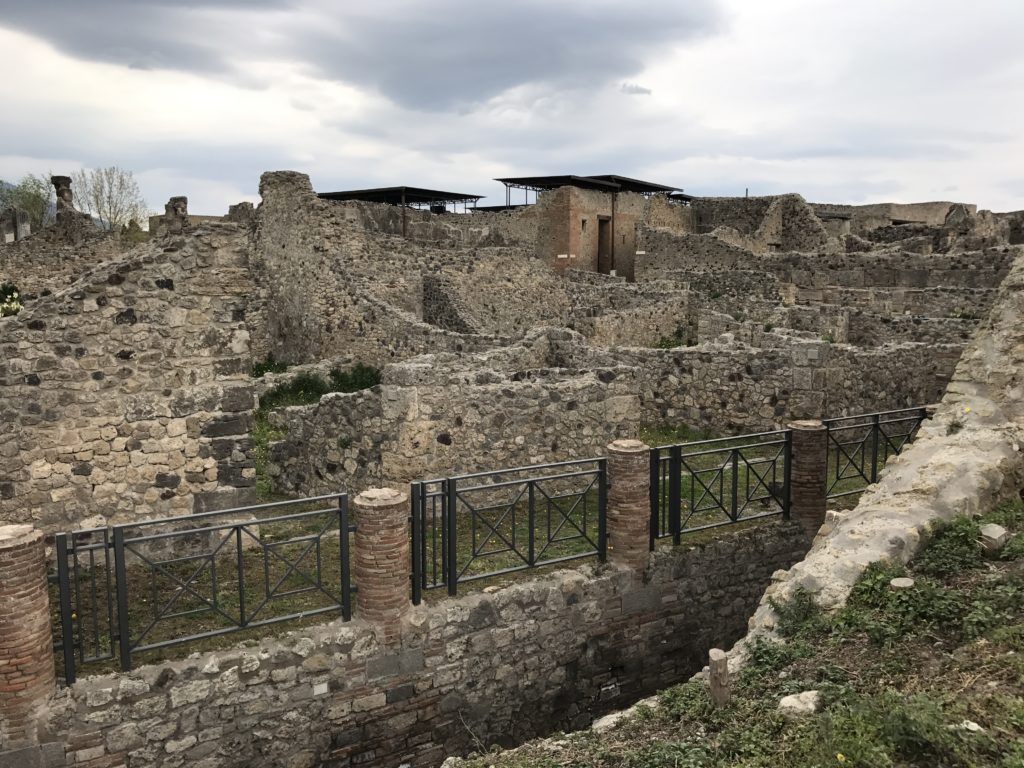
Although Pompeii looks like a concrete jungle (rather marble and stone), the surroundings of Pompeii are stunning with the river, mountains, flowers and more. Maybe that’s why this was a tourist destination for the Romans and Italians. I wonder if hiking was as popular back then as it is today in California.
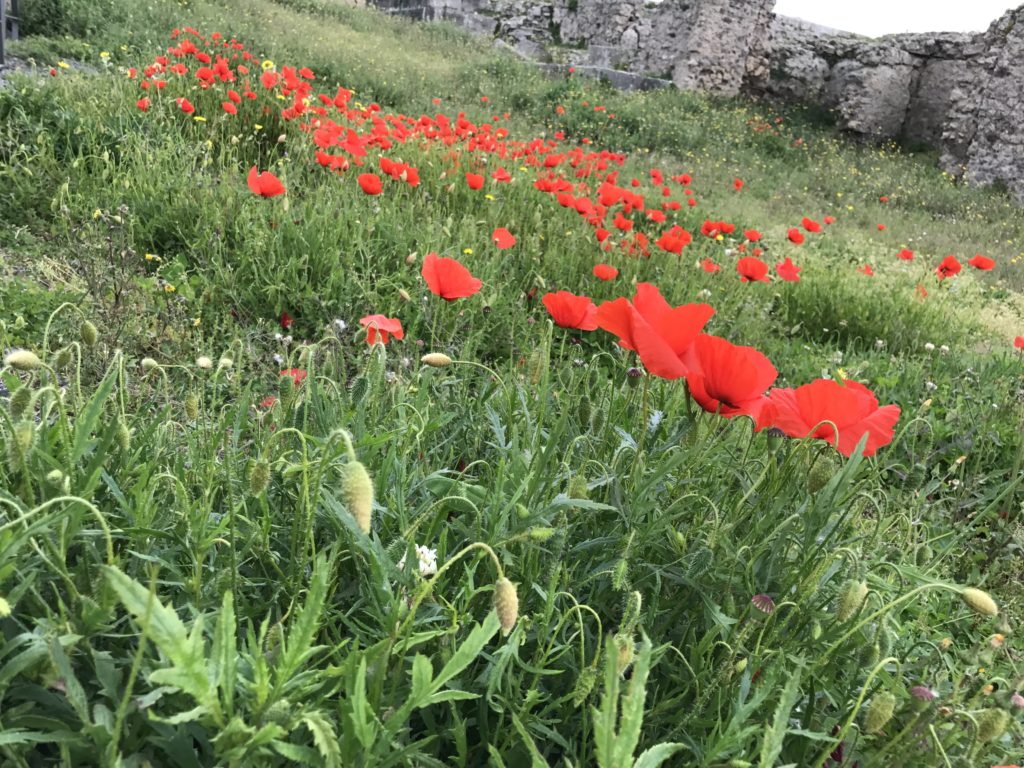
At the End of Life
Death comes to all. Some people die leaving memorable legacies and others are forgotten. Towns and communities thrive and generally die a slow death. Civilizations rise, reach their pinnacle, then decline and disappear slowly. What’s unique about Pompeii is it was buried alive at its pinnacle. Although much was stolen by local treasure hunters, enough was left behind to reconstruct the lifestyle at its prime and in death.
Since Pompeii was buried for 1500 years, the bodies decomposed in place, leaving precise cavities where the people would have been that night. Scientist injected these hollow cavities with liquid plaster, which cooled and hardened to take the exact shape of the space. Today, we have casts of hundreds of people and animals from Pompeii that tell a lot about that tragic night and the people. Some of the images taken during our visit to Pompeii are quite disturbing.
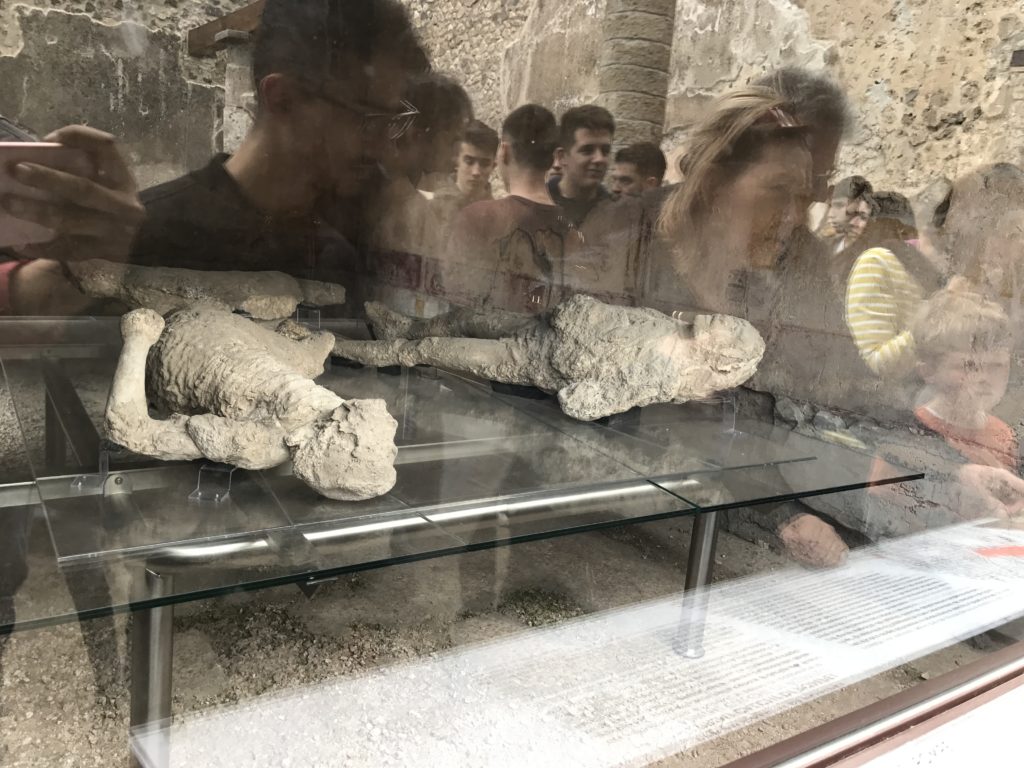

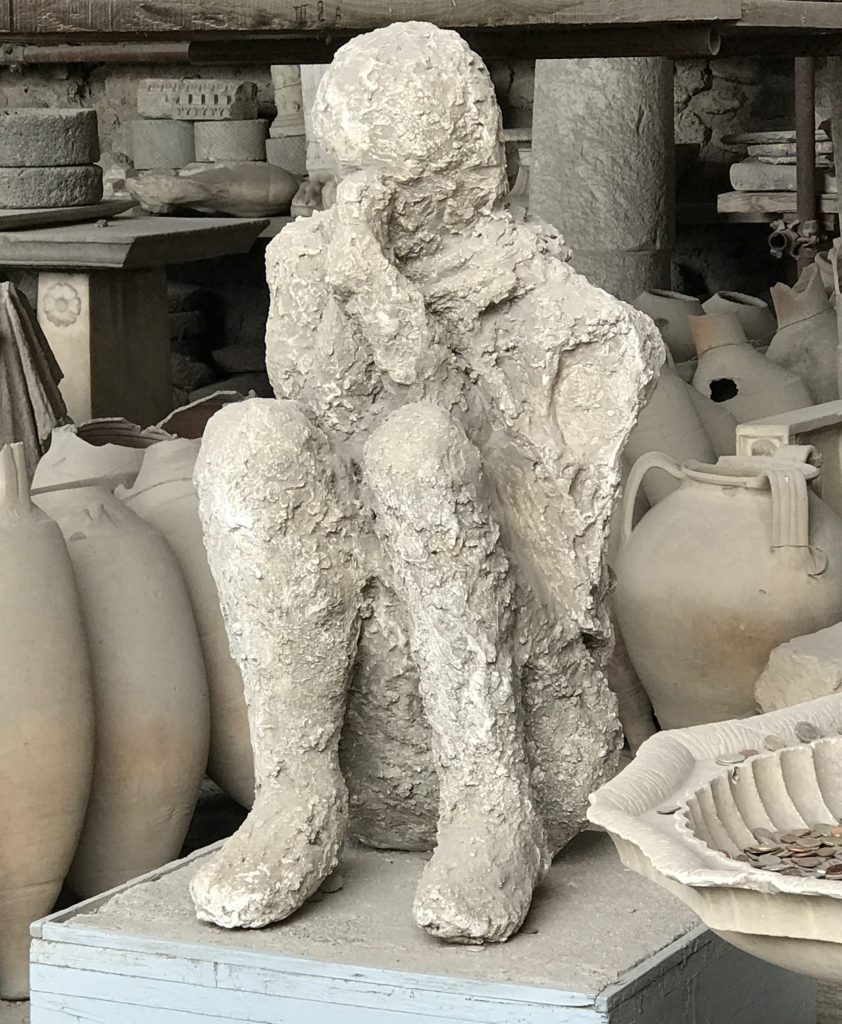
The dog is one of the most touching casts we saw when we visited Pompeii. The copper collar shows he was tied at the time of the eruption. The body is twitched and strained as he struggled to release himself from the leash. Death must have come quickly but this shows the agony of death. Maybe he felt the tremors sooner than the human.
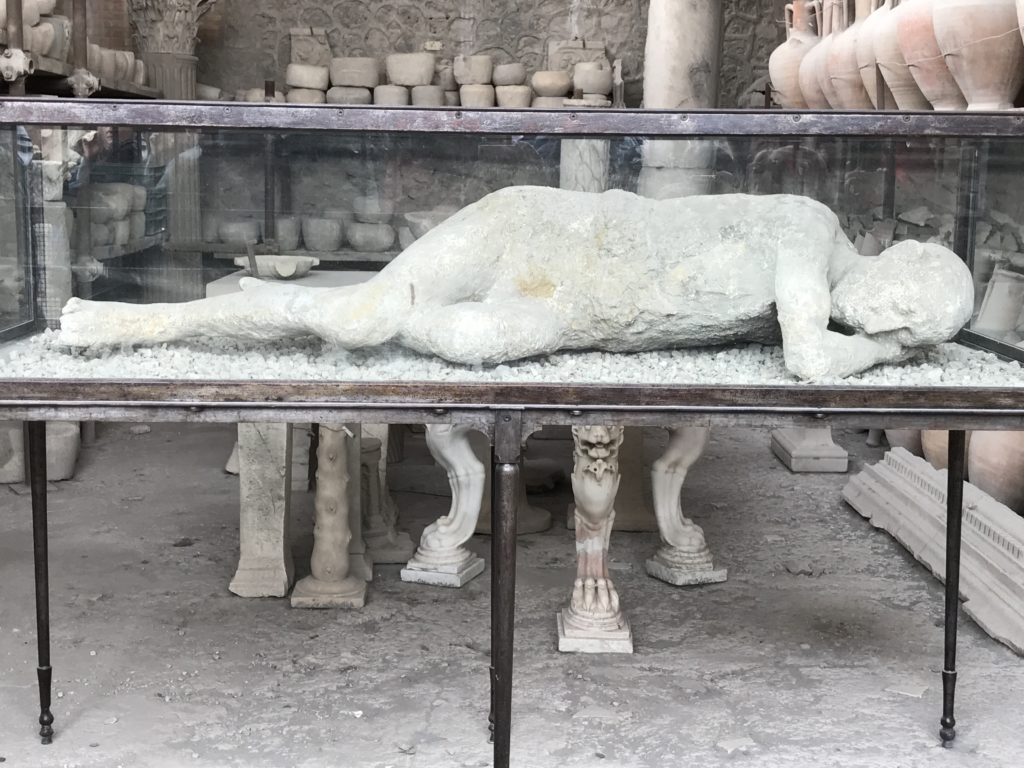
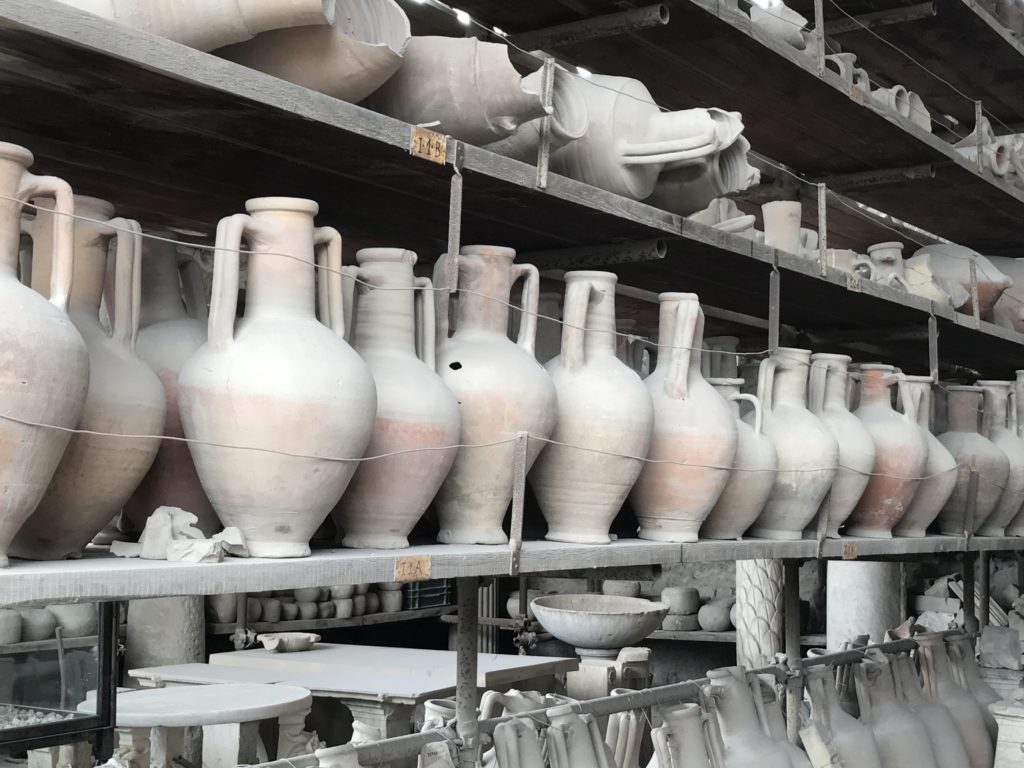
Igor Mitoraj’s Grand Sculpture Exhibition
Igor Mitoraj’s sculptures were scheduled to be on display in Pompeii until Jan 2017. However, we got lucky to see them even when we arrived in April. Mitoraj’s art with their mutilation and decay of perfect form resonate with Pompeii, which was struck and destroyed by sudden natural calamity and now lies in decay. It was Mitoraj’s dream to have an exhibition in Pompeii, and his dream finally came true two years after his death.
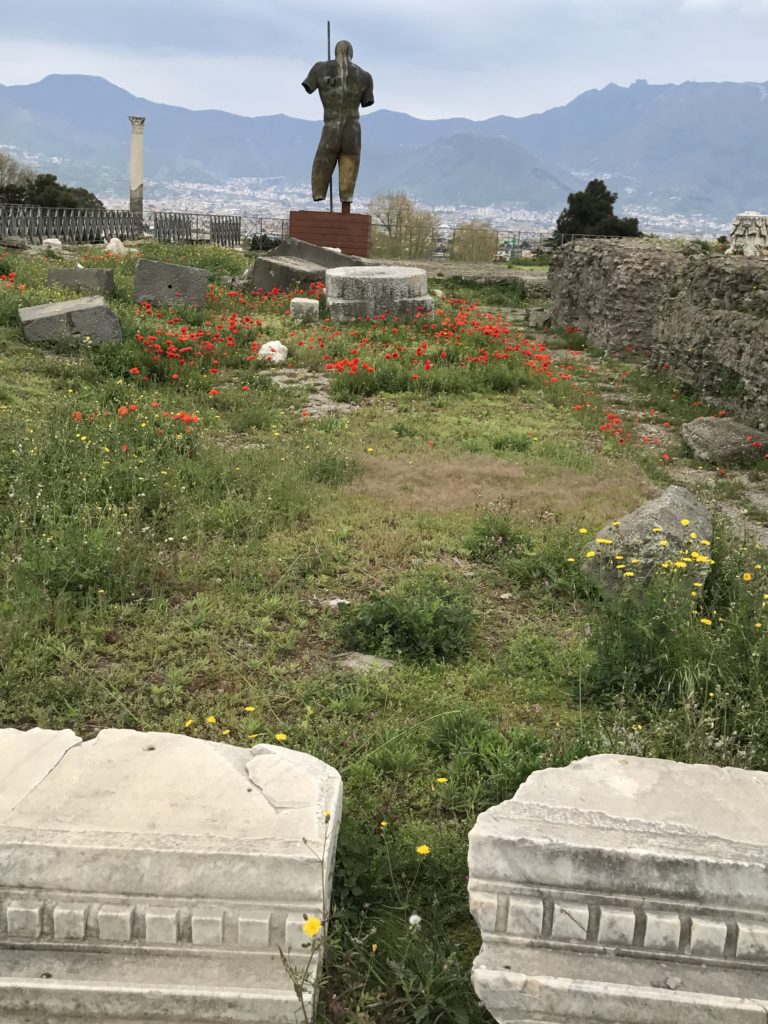
Frequently Asked Questions
If you’re taking a guided tour, you can see the highlights in under 3 hours. If we went without a guide we would have spent twice as much time.
Visit Pompeii during hours of operation –
– 9.00 – 7.30pm (entrance closes at 6pm) – 1st April to 31st October.
– 9.00 – 5:30 pm (with last entrance 3.30pm) – rest of the year.
Pompeii is closed on 25th December, 1st January, and 1st May.
There are apps and maps you can use to visit Pompeii on your own. Also, there are group tours of Pompeii. But, if you’re short on time, I would recommend a private registered guide from the entrance.
We opted for a private tour with a registered guide that our driver organized. He was very knowledgable and a great story teller. Also, he was able to navigate the crowds and dodge the youth groups, so we had a great experience. In 2017 he charged us around €100, which was well worth it.
Pompeii is one of the most popular tourist attractions in Italy. Around 2.5 Million tourists visit Pompeii each year. They say that nearby, lesser know town exhibits a similar history but without the crowds.
You can do a day trip from Naples, Amalfi coast or Rome.
We flew into Napoli and rented a car with a driver to go to Positano. On the way, we stopped at Pompeii for 3 hours.
In Closing
When you visit Pompeii or any town in Italy, you’ll see loads of lemon, oranges, olives and more. Be sure to stop and try some.
My visit to Pompeii was a dream come true. From dry pages of the textbooks from my childhood, it was quite an experience to actually visit Pompeii in real life and learn so much more.
NOTE: The stories shared in this post are as heard from our guides, other curious people, read in pamphlets and mostly our observations in Pompeii. This is by no means meant to be a comprehensive guide or a replacement of historical research.

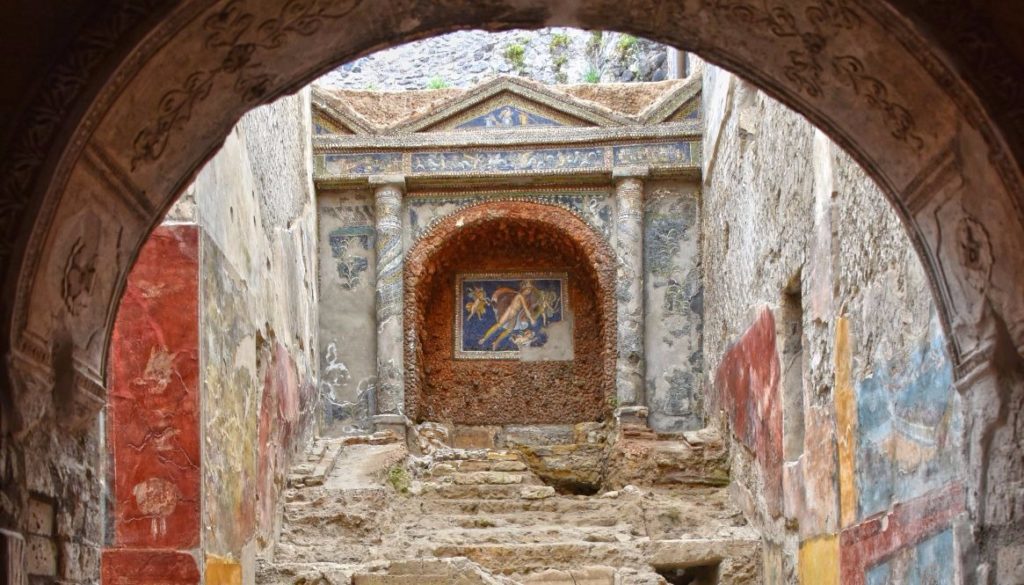
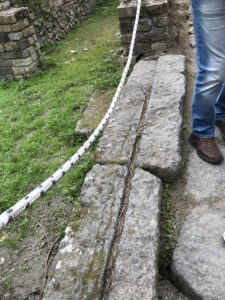
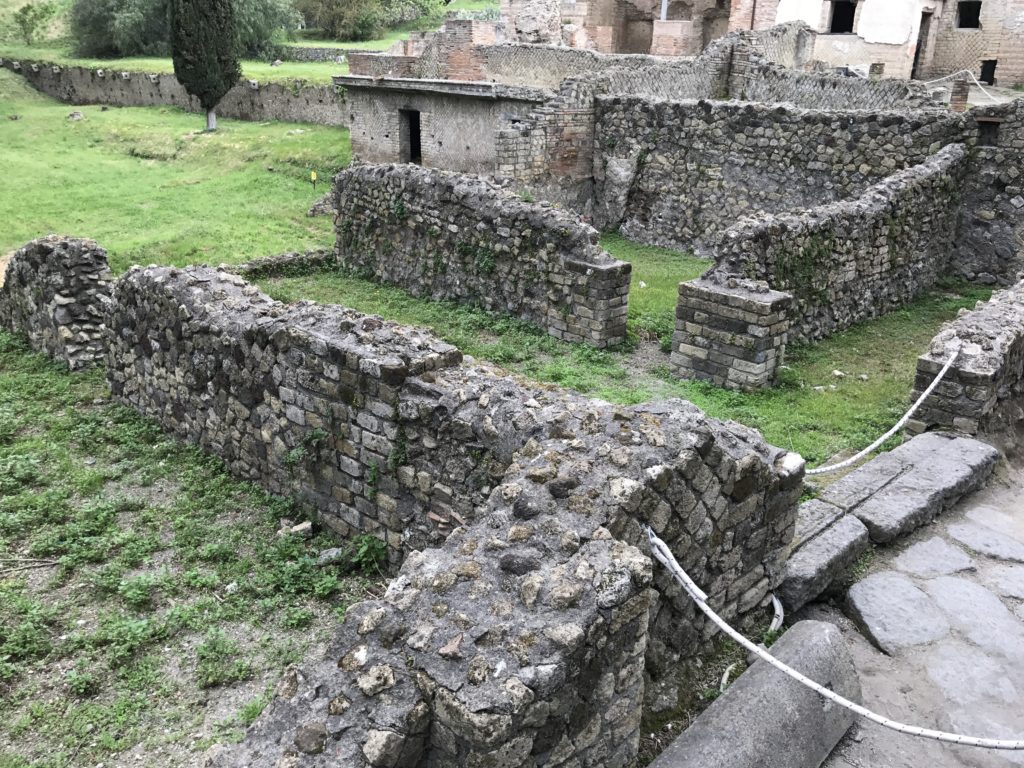
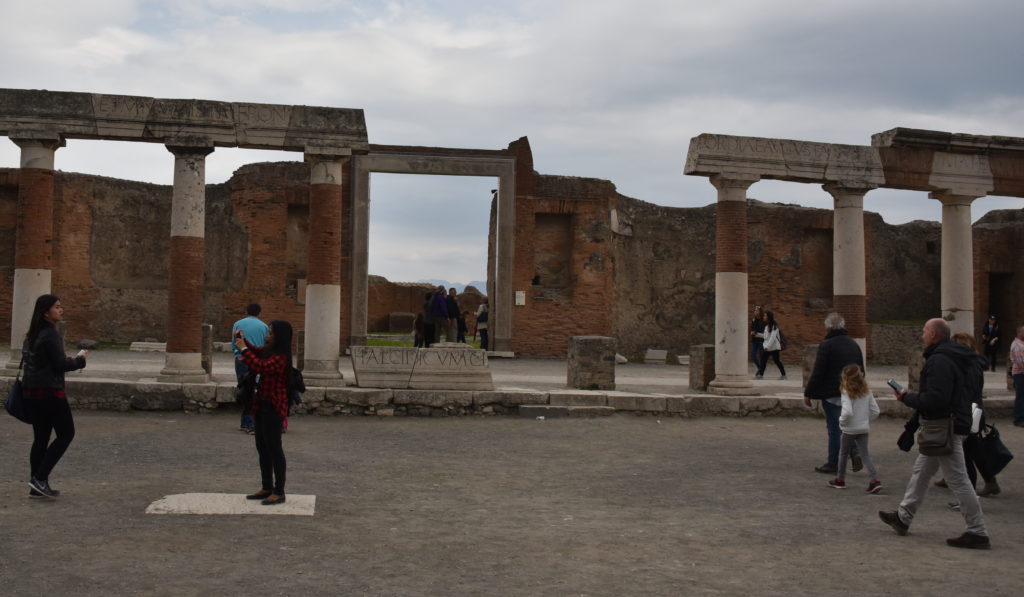
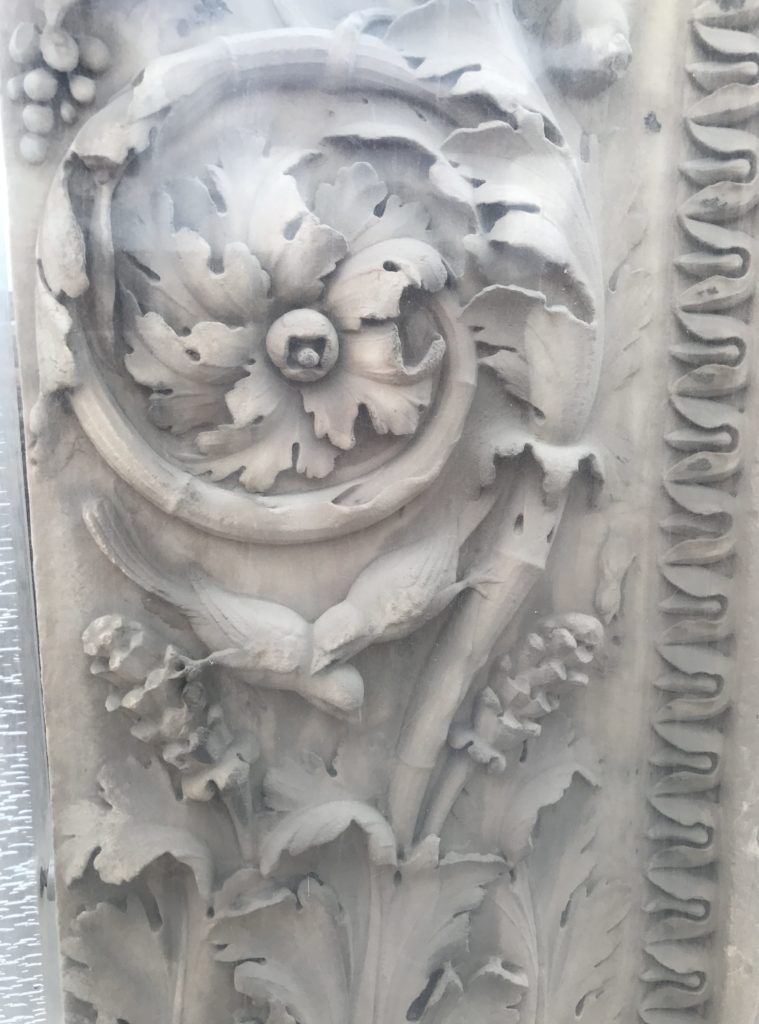
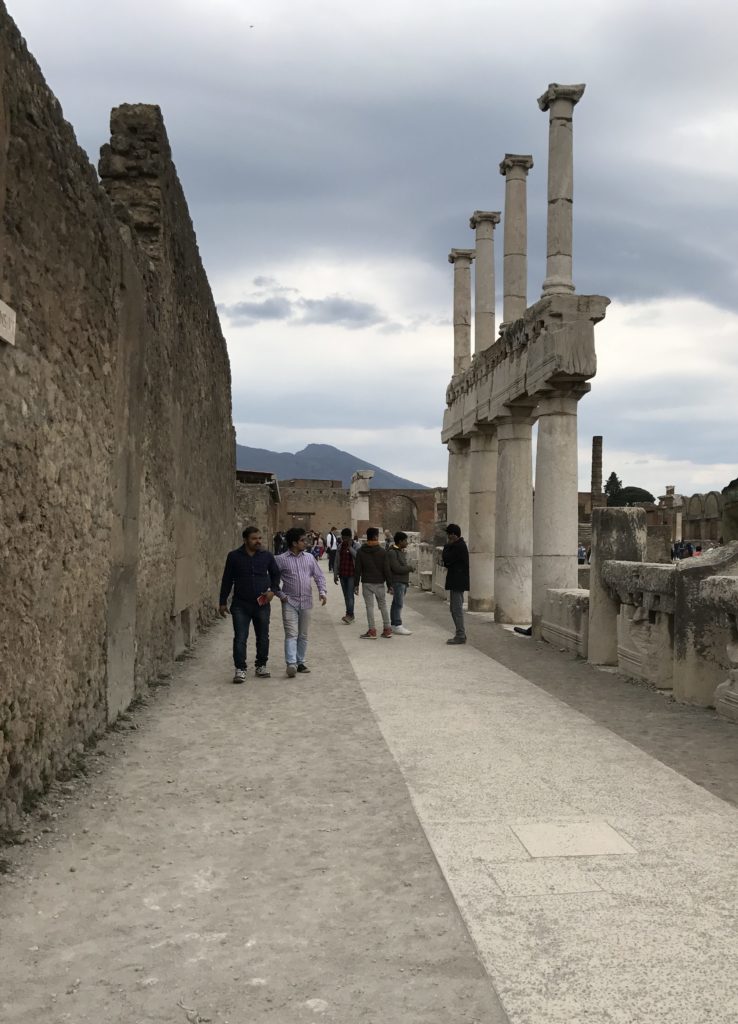
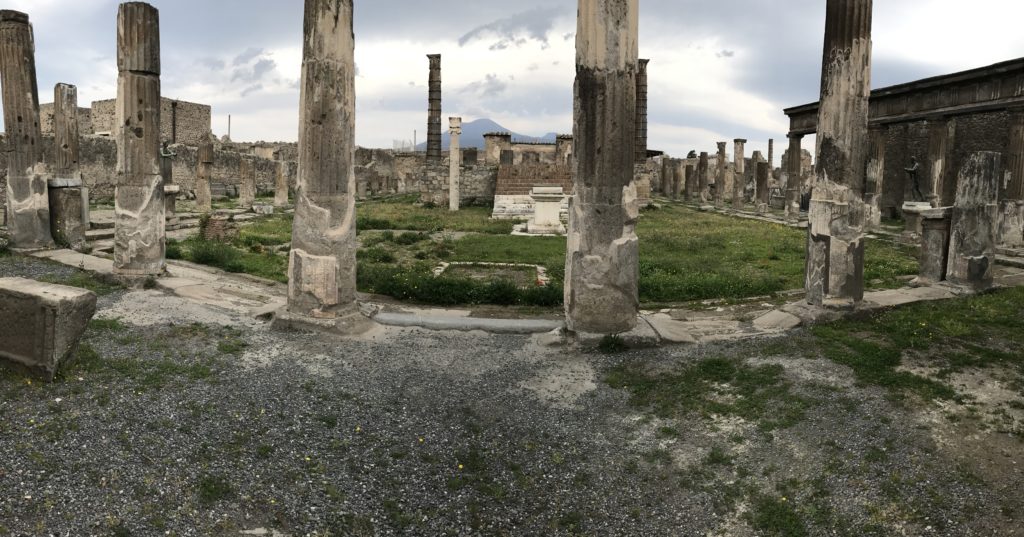
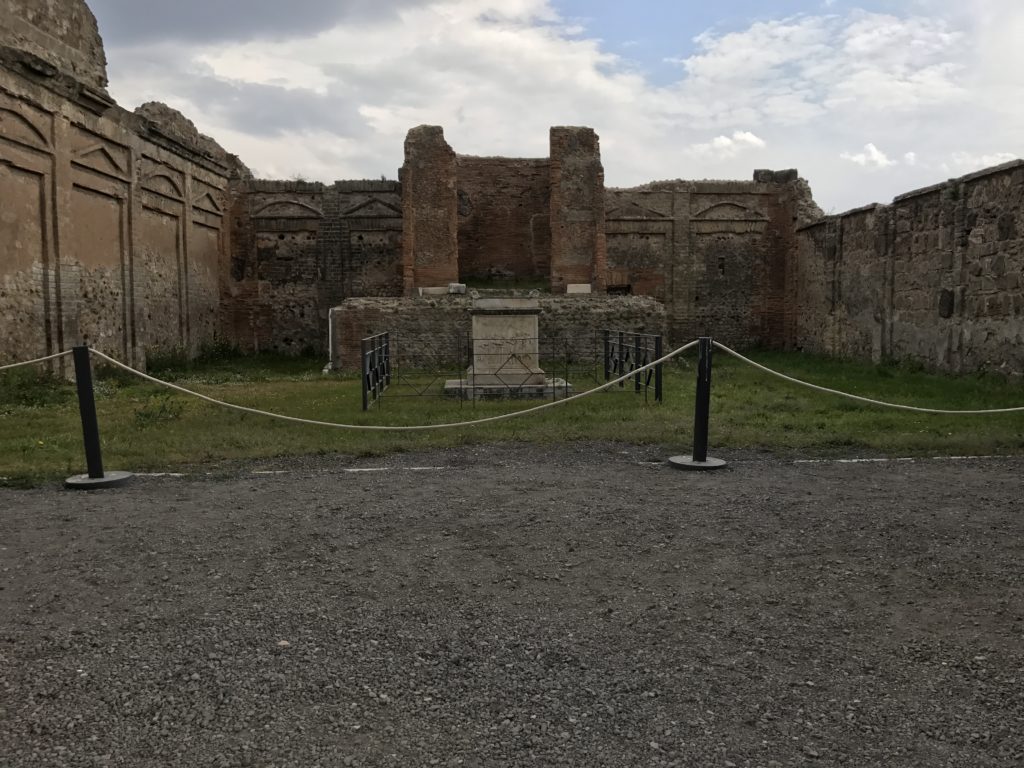
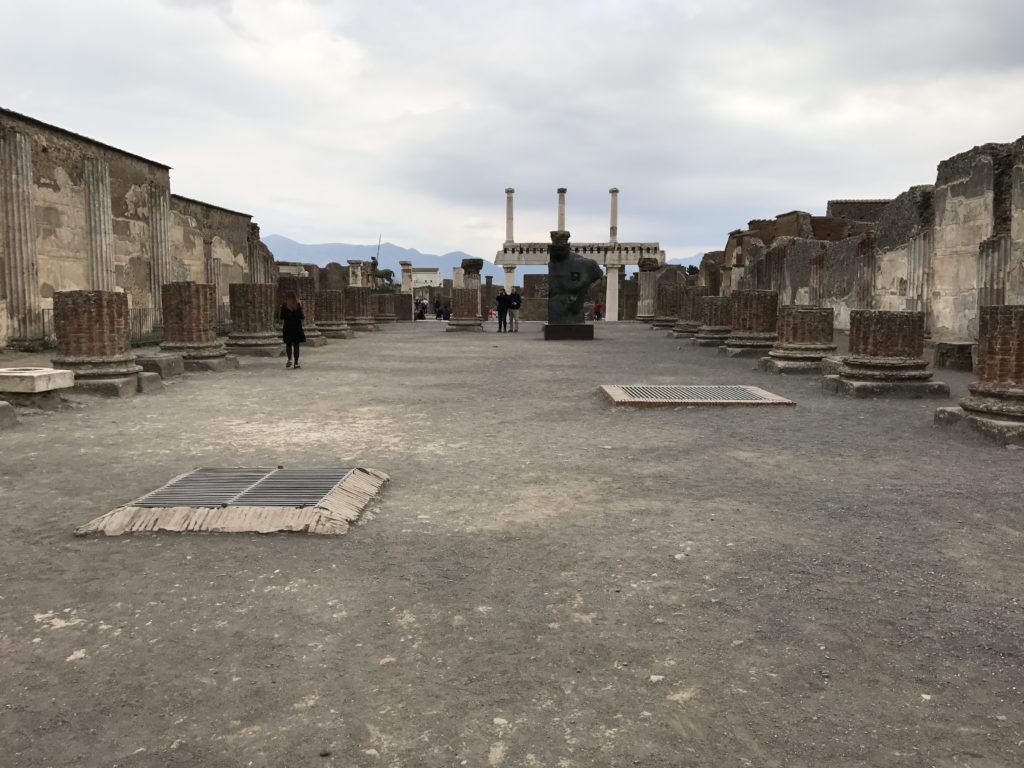
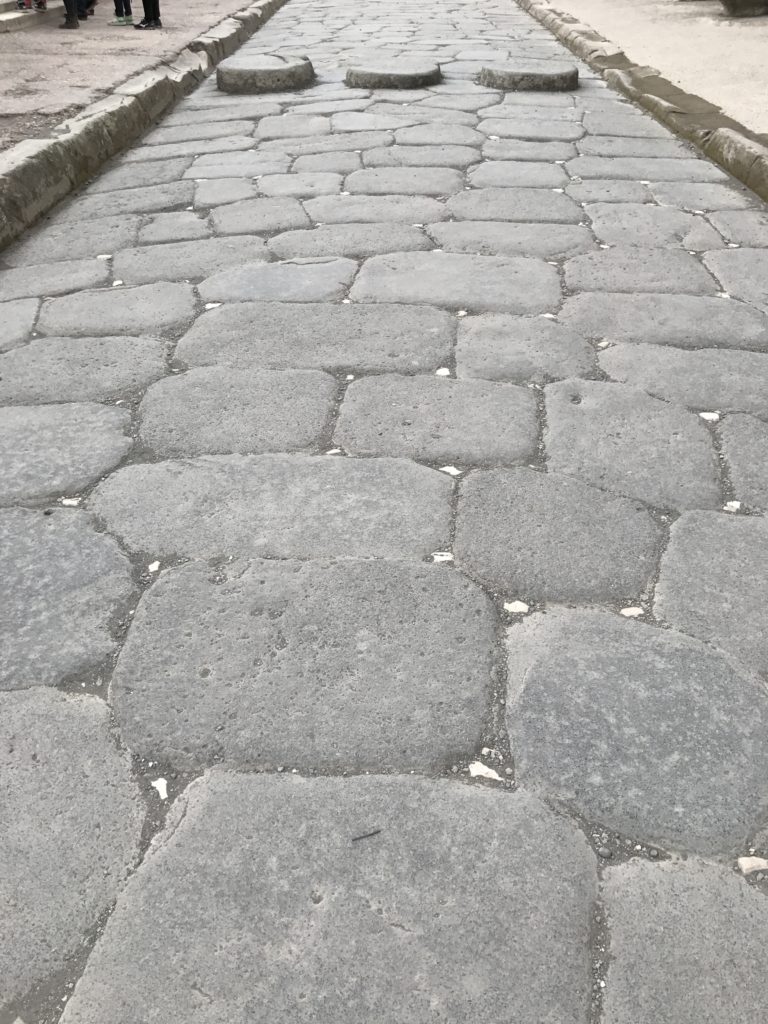
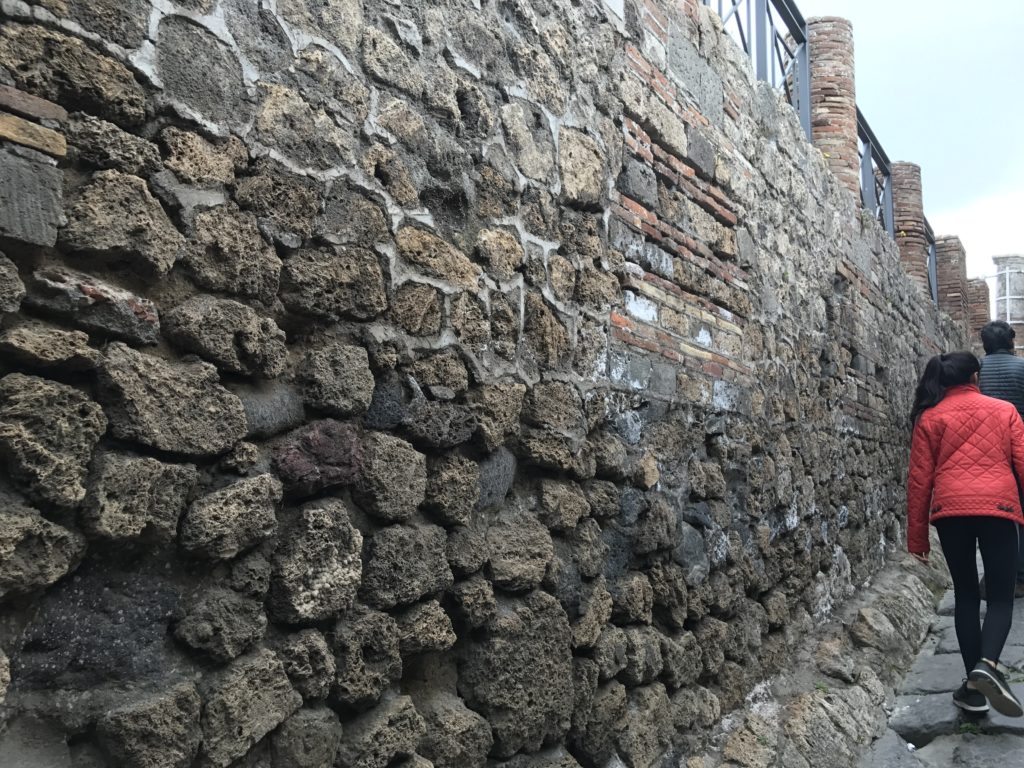
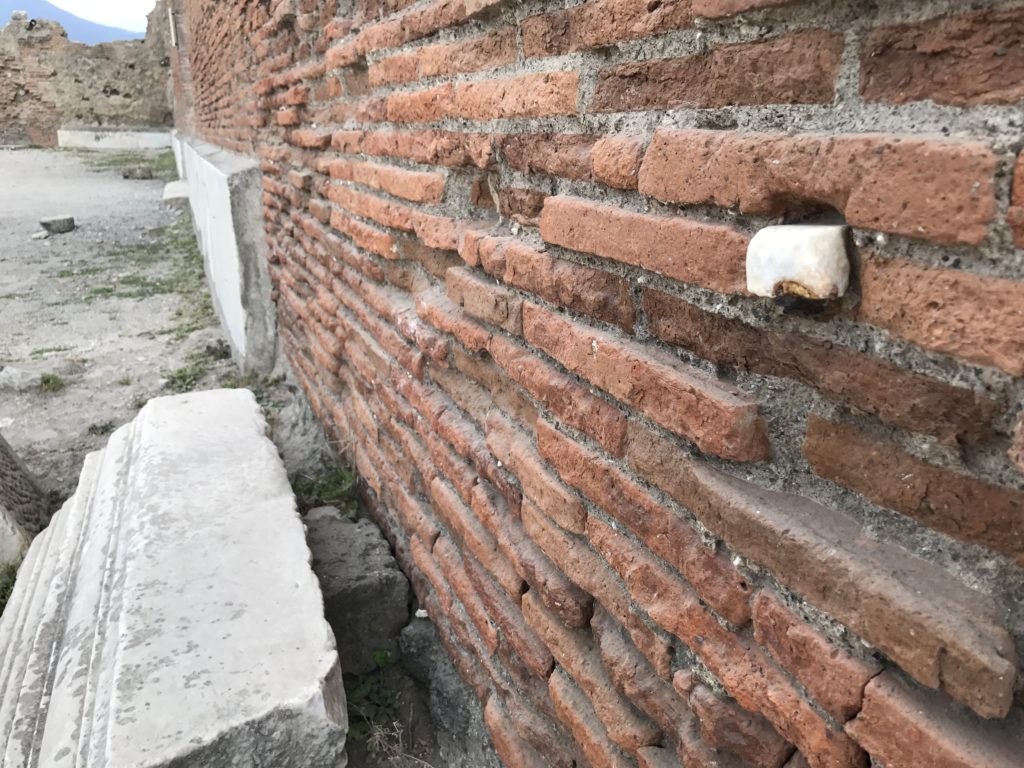
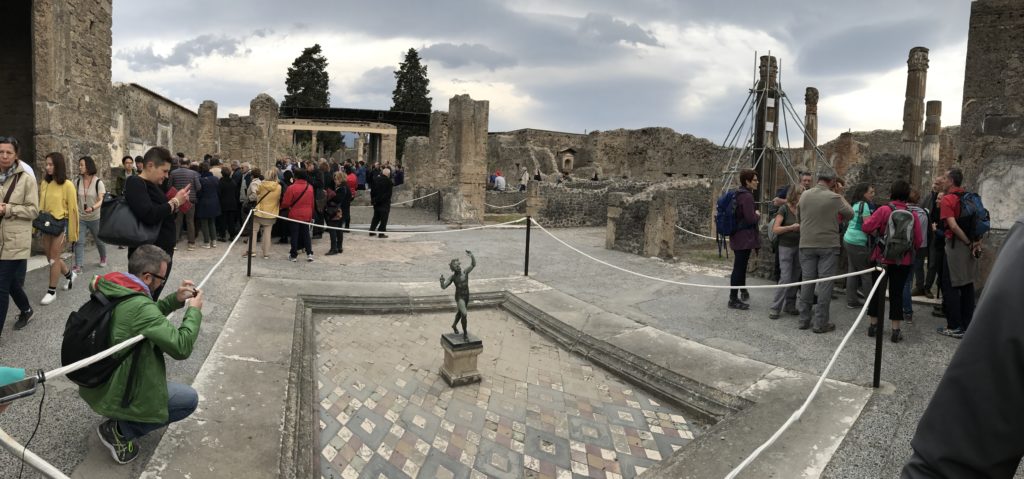
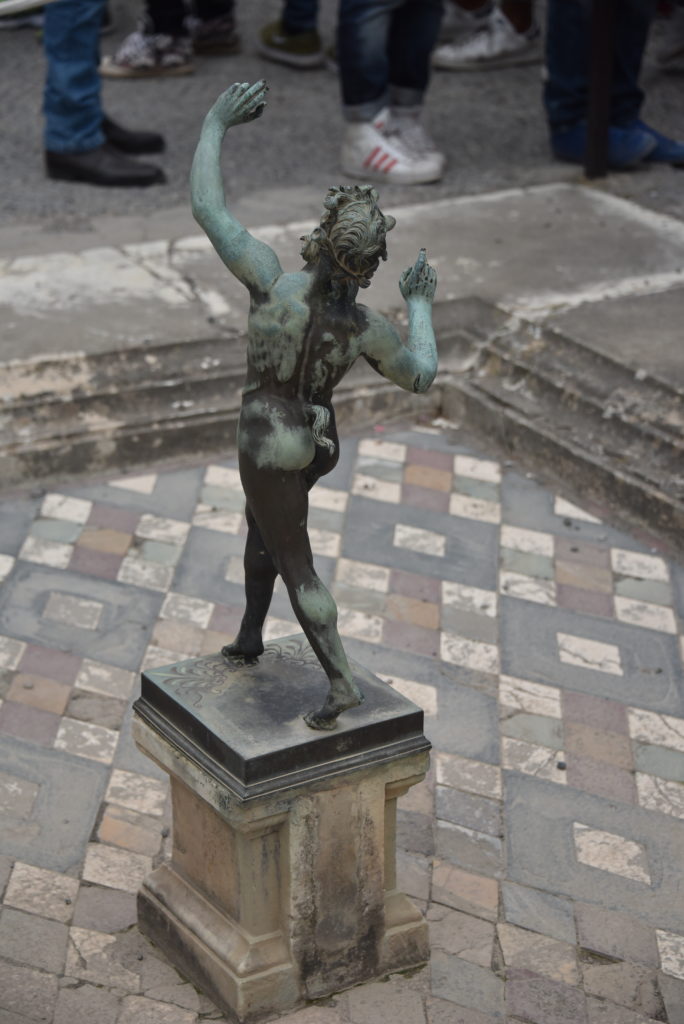
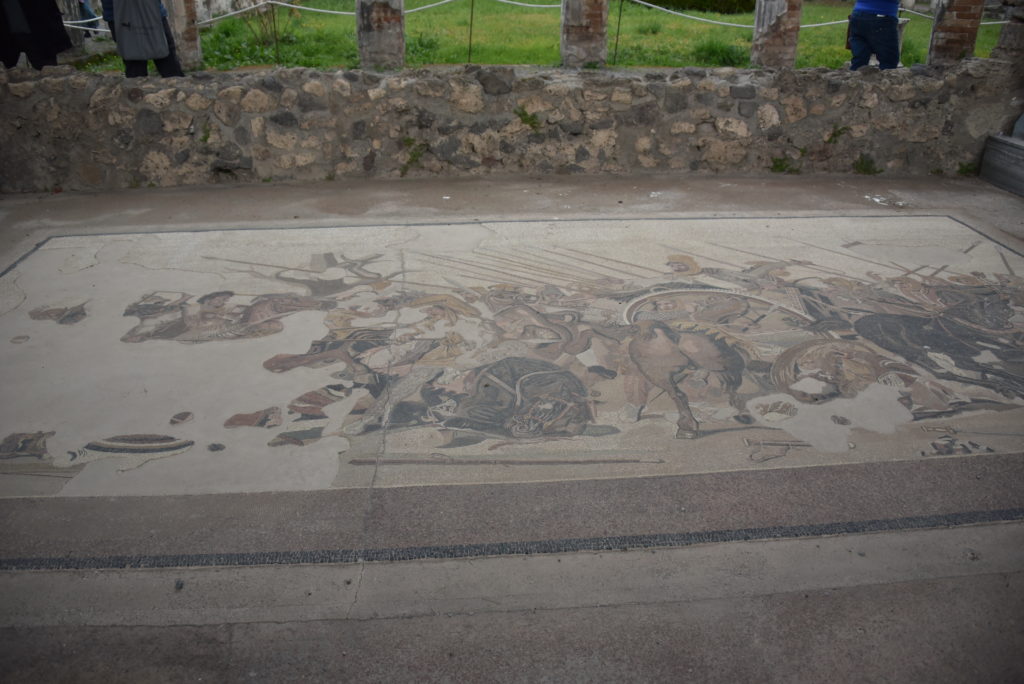
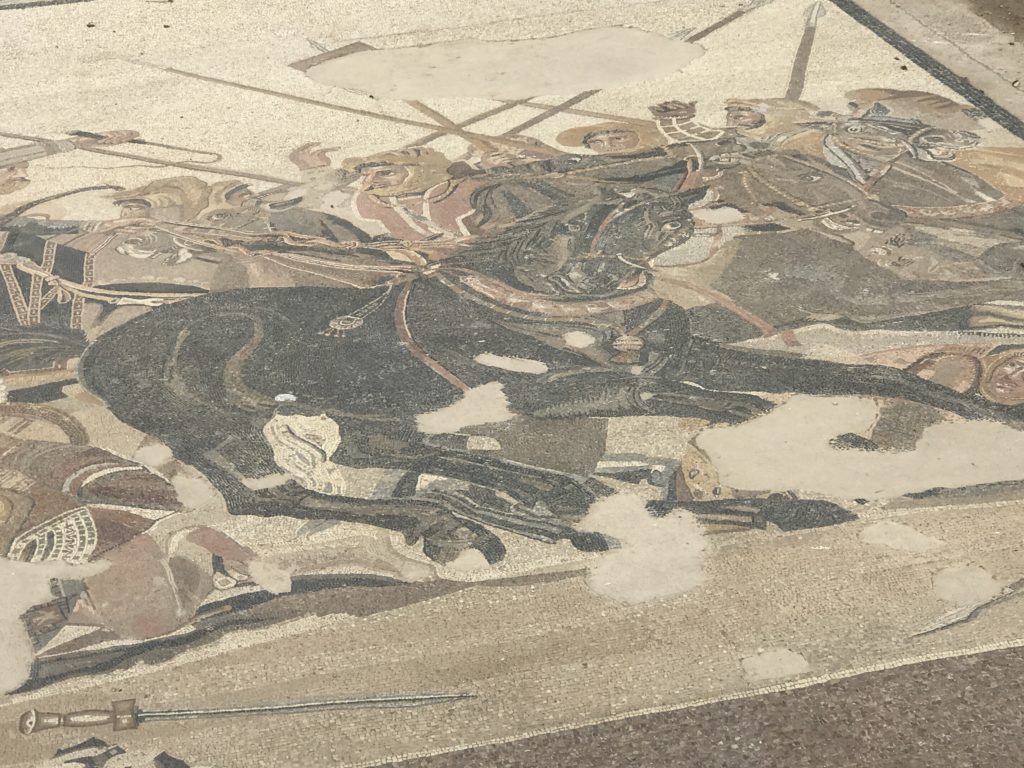
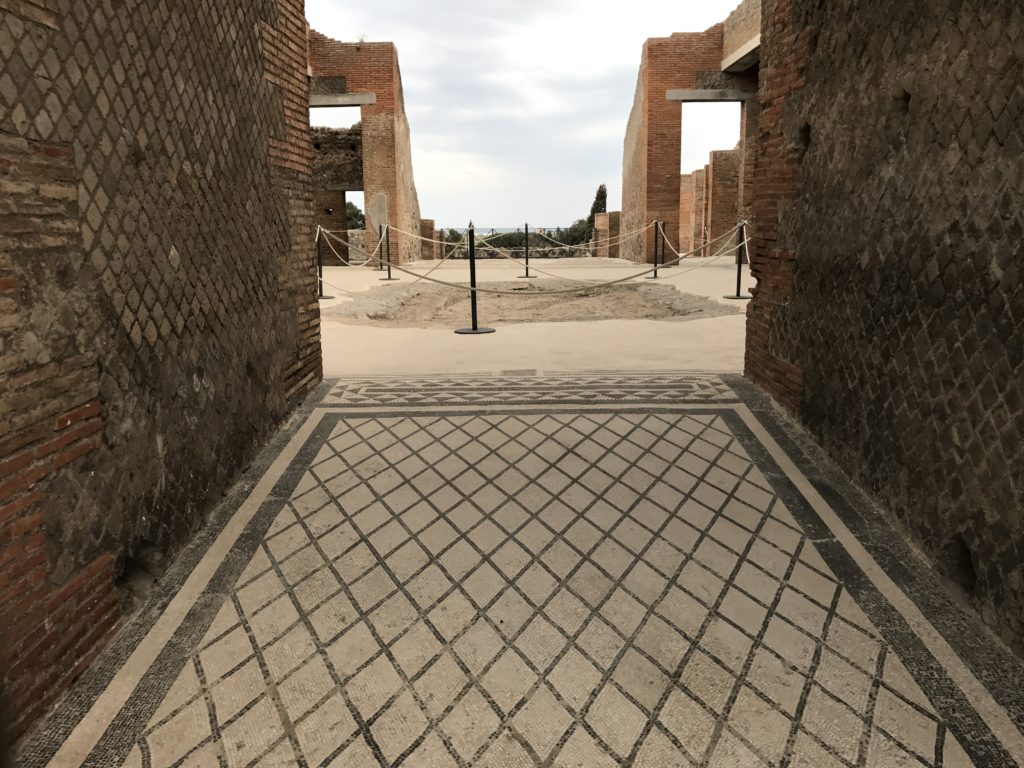
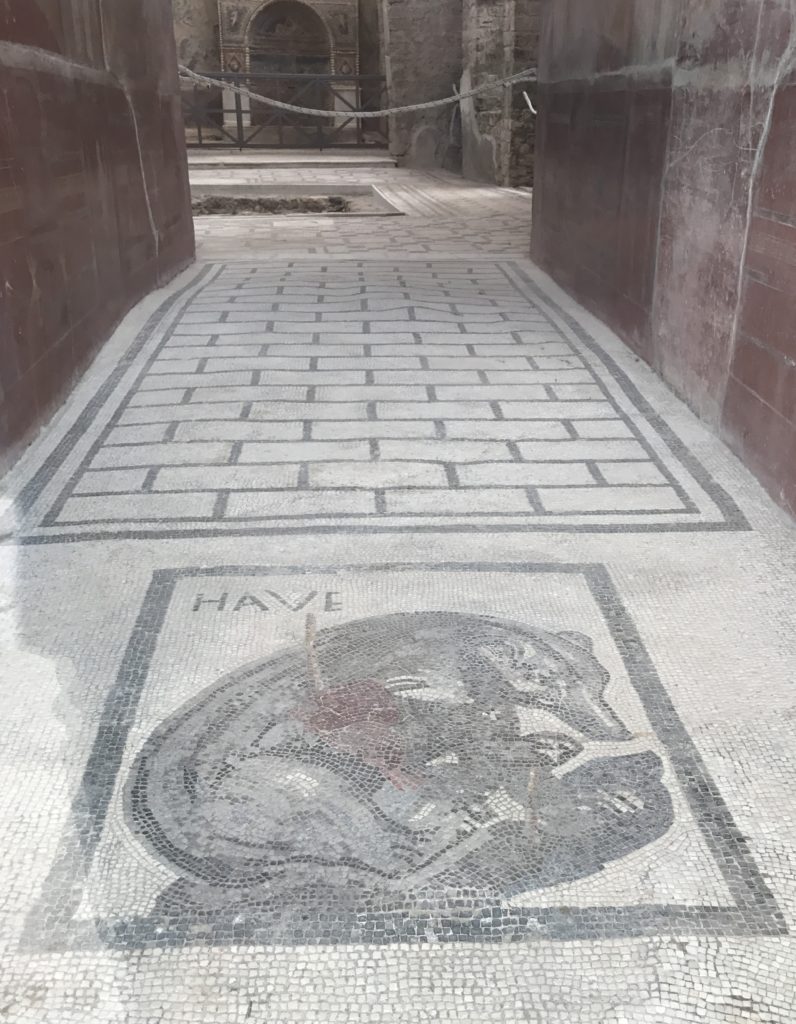
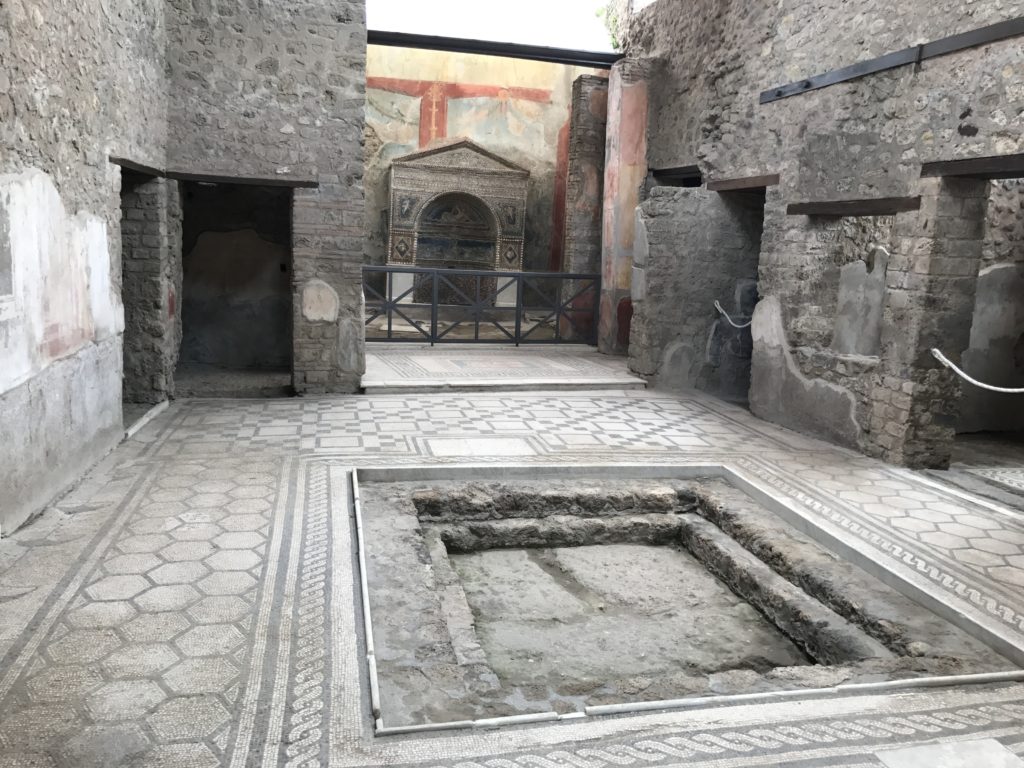
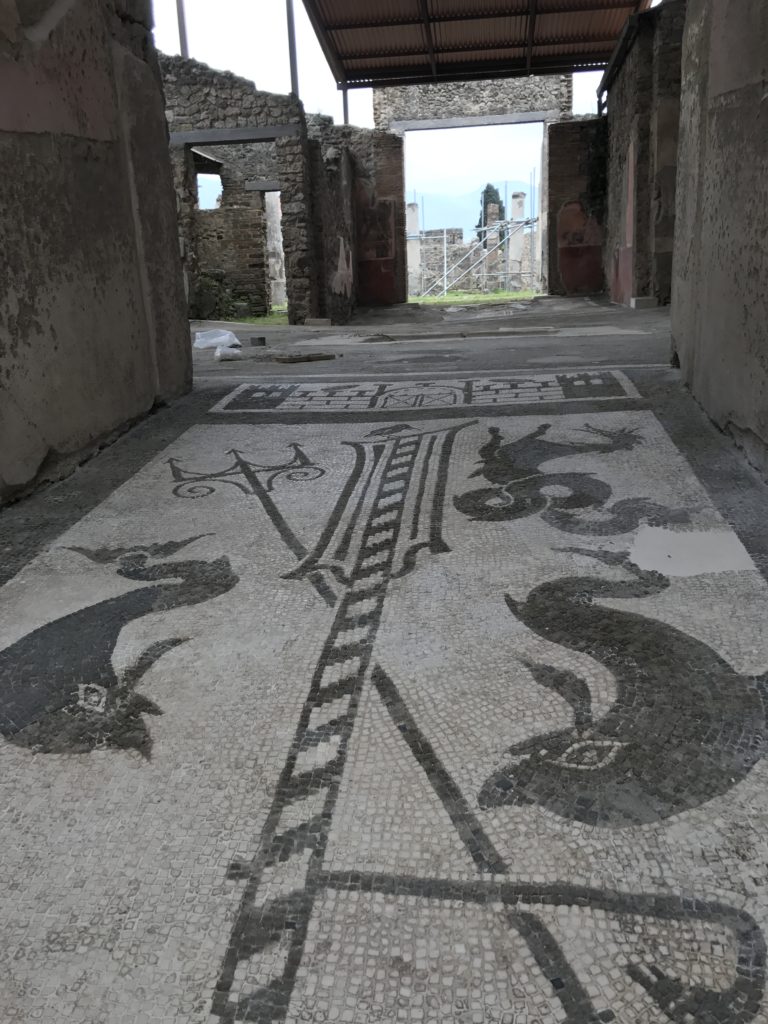
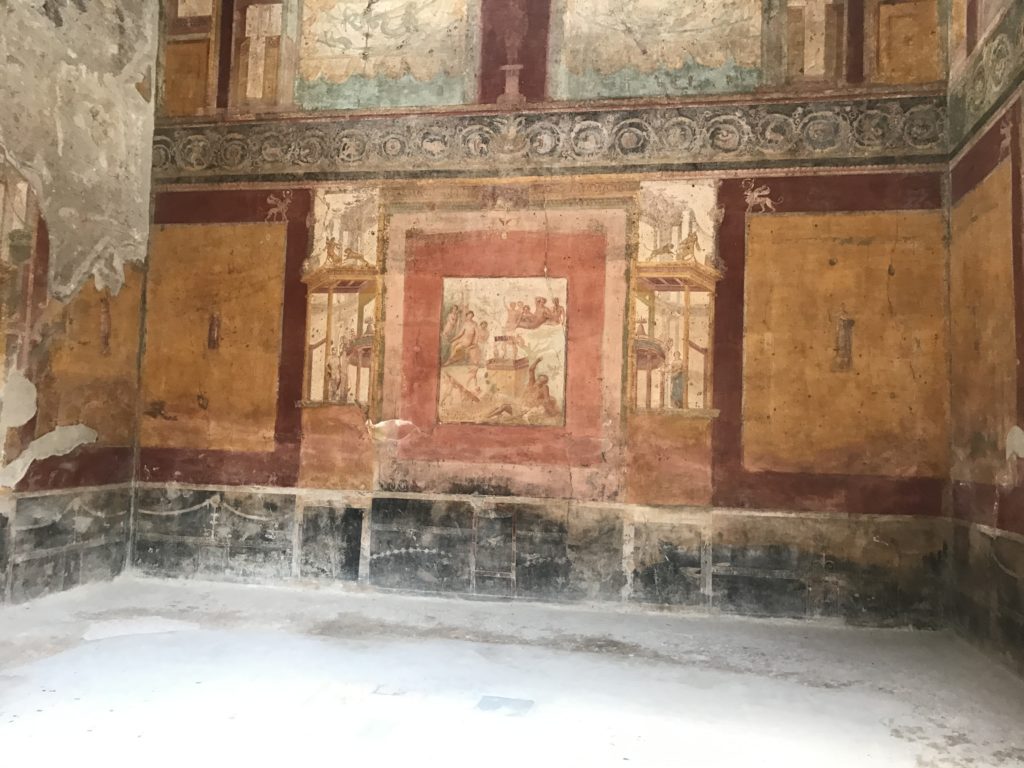
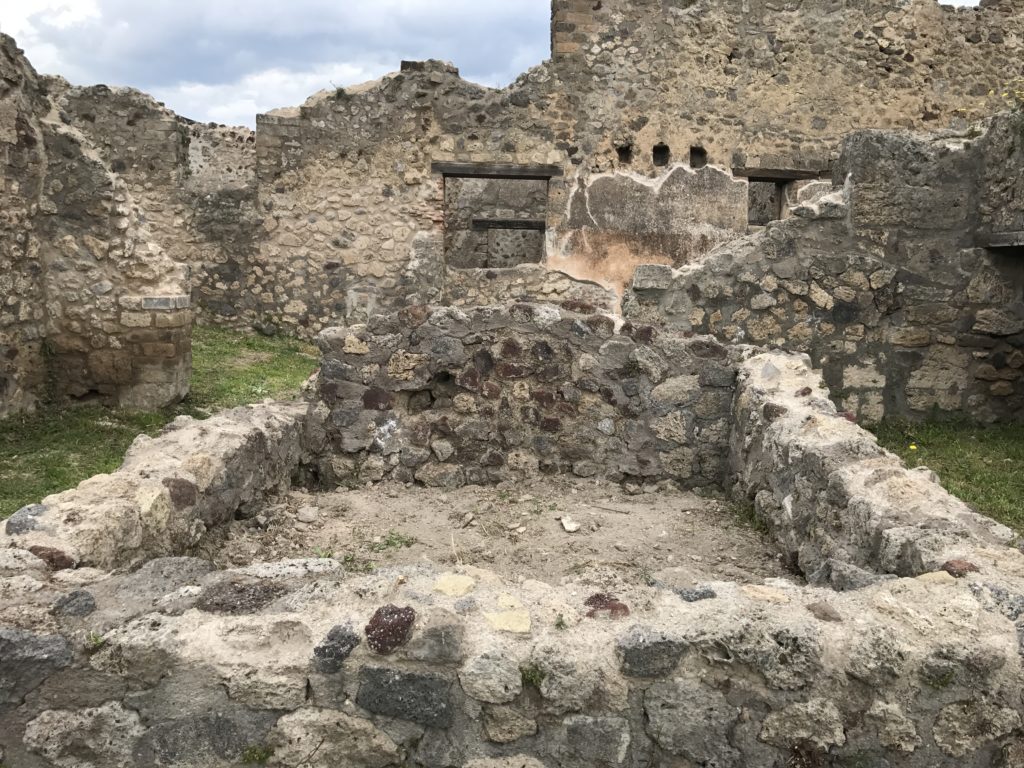
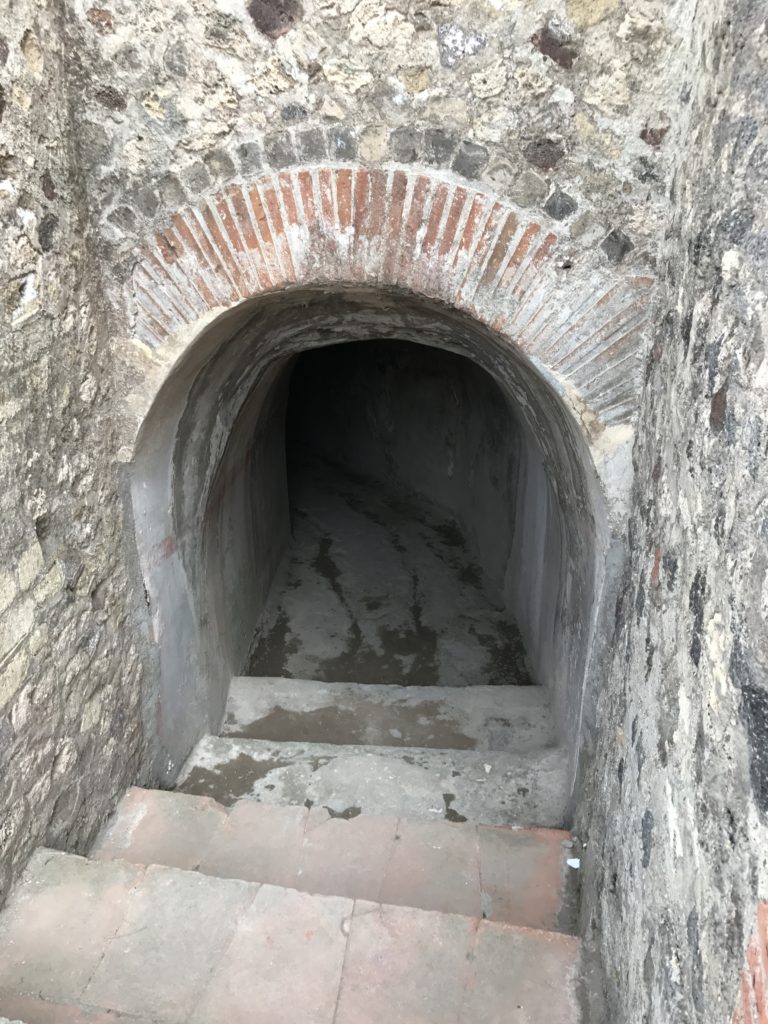
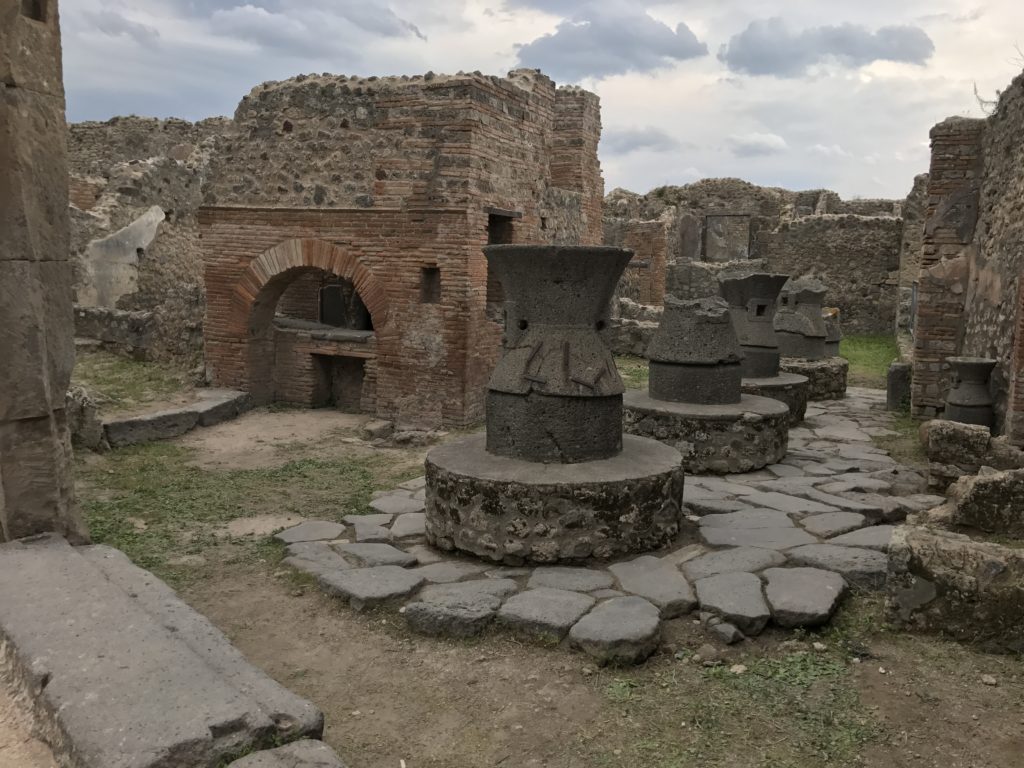
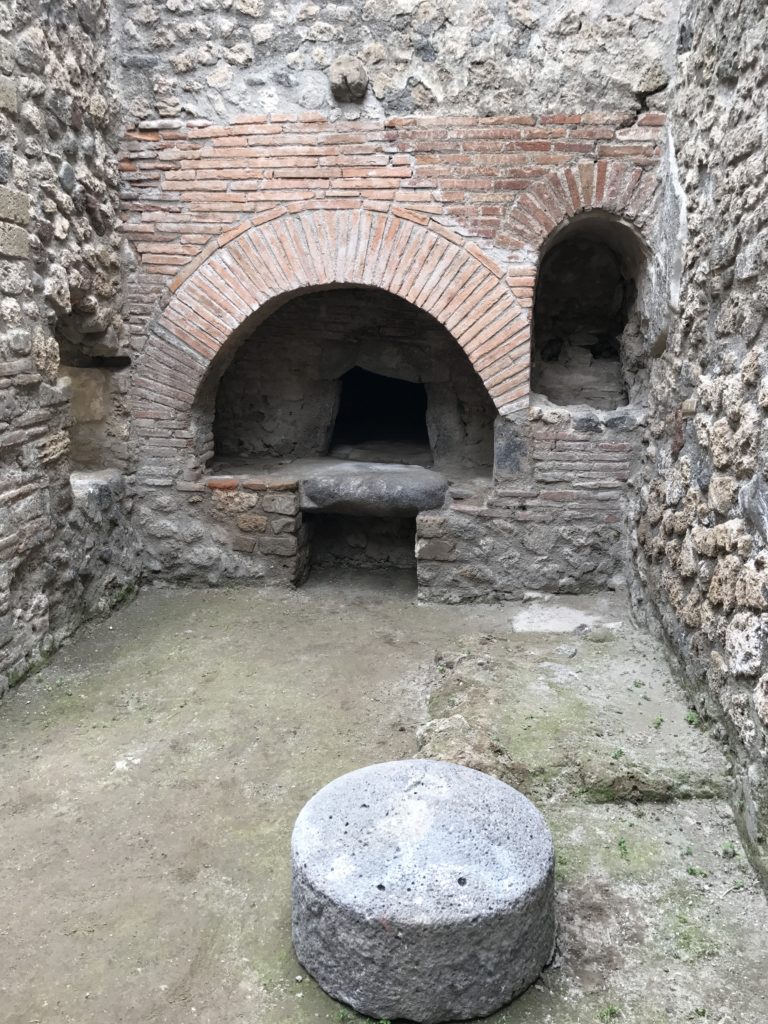
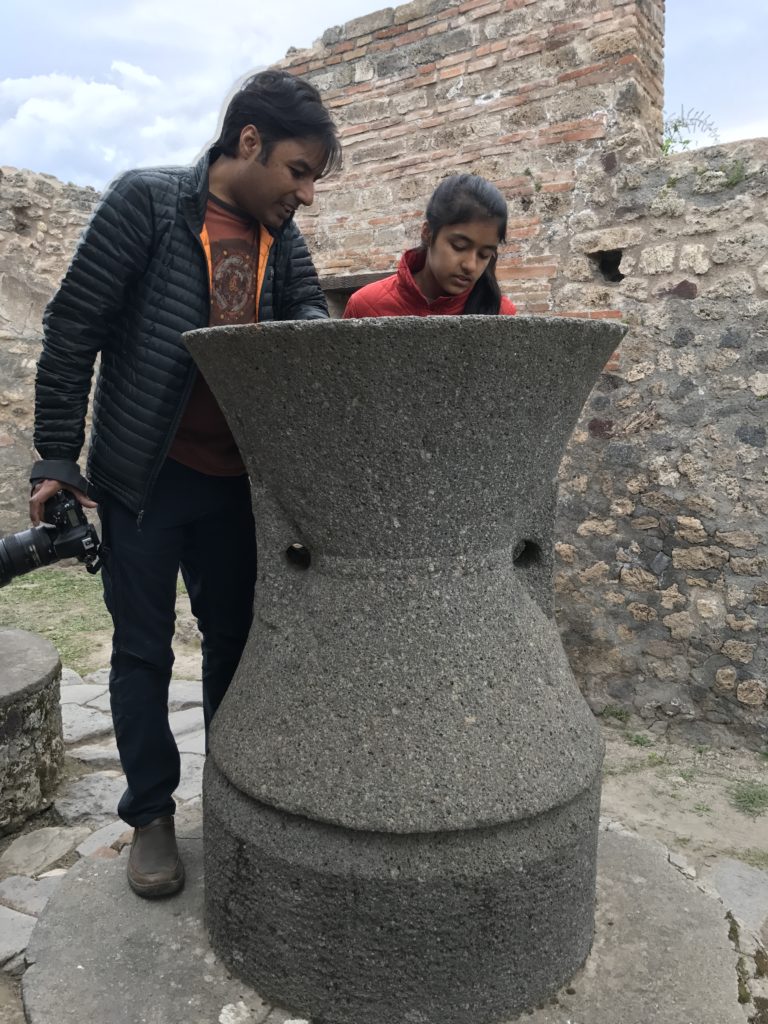
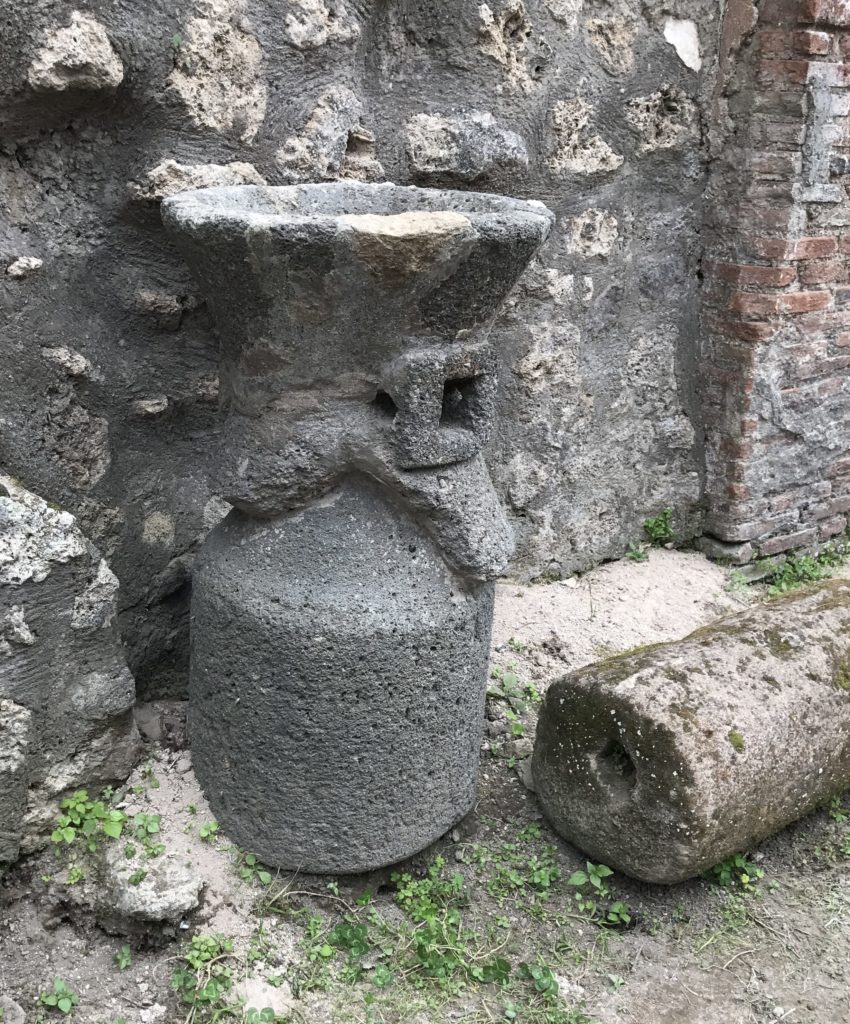
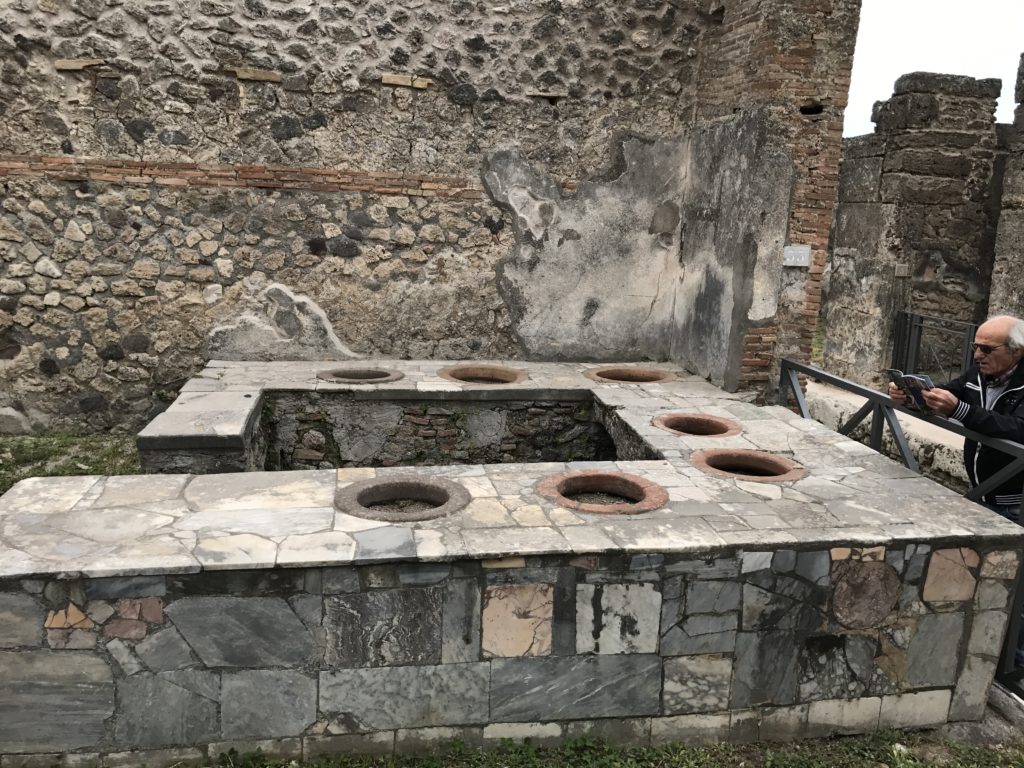
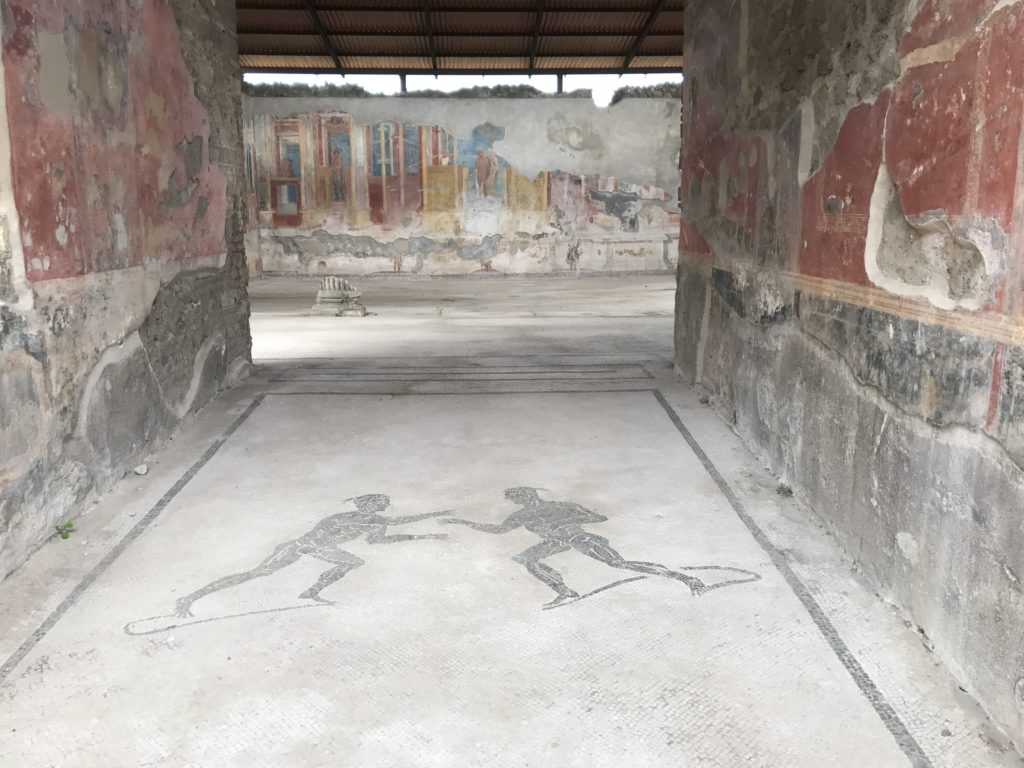
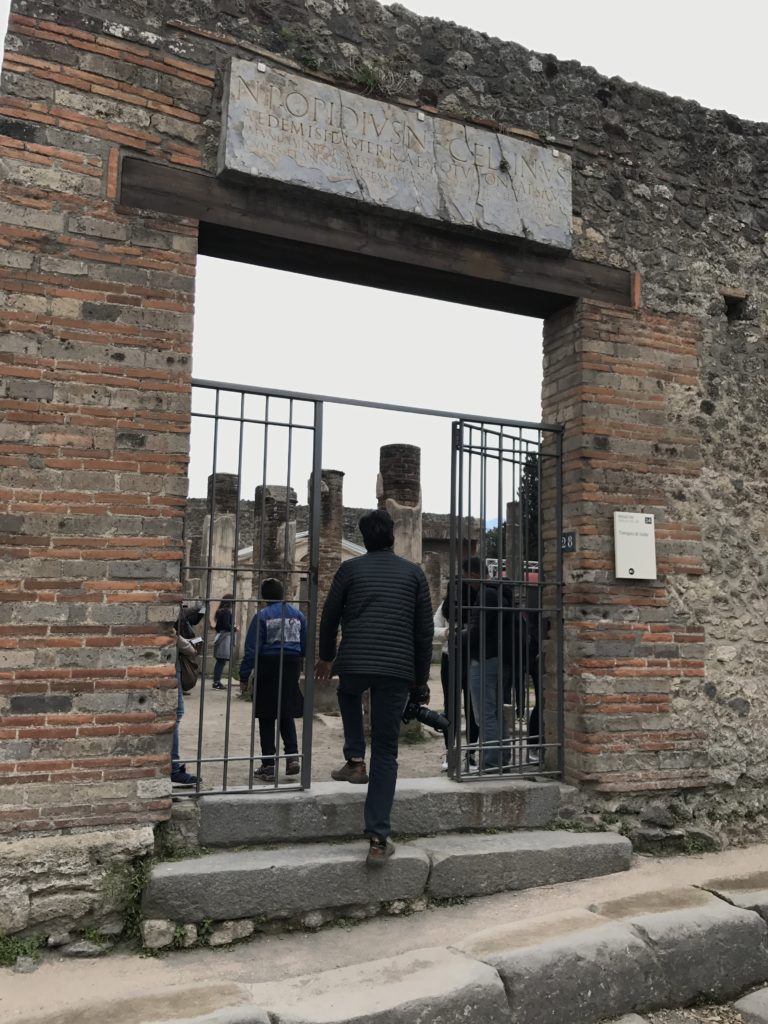
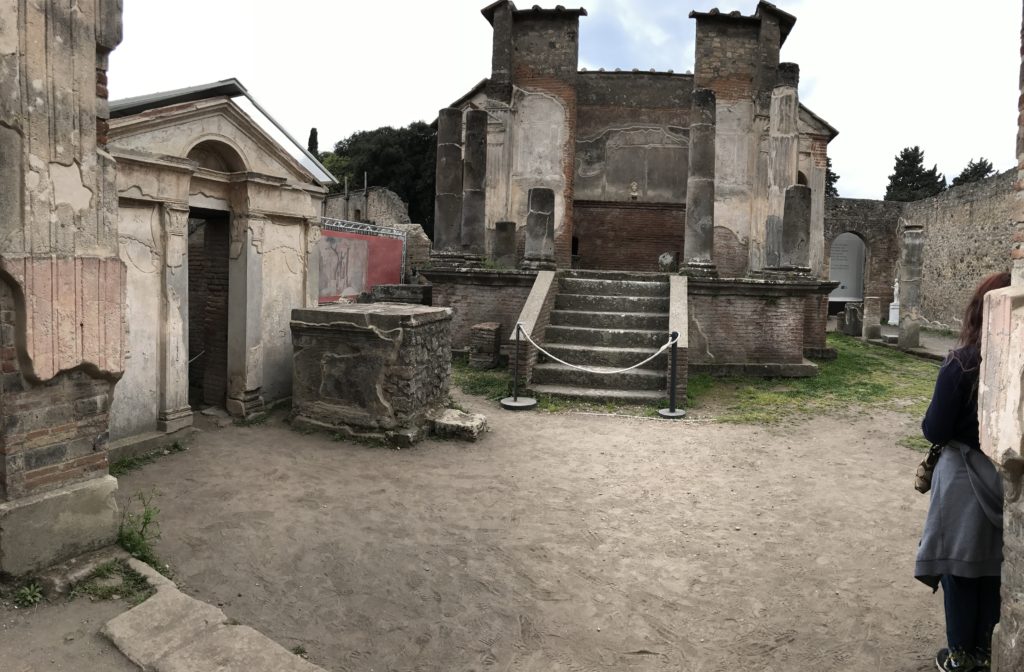
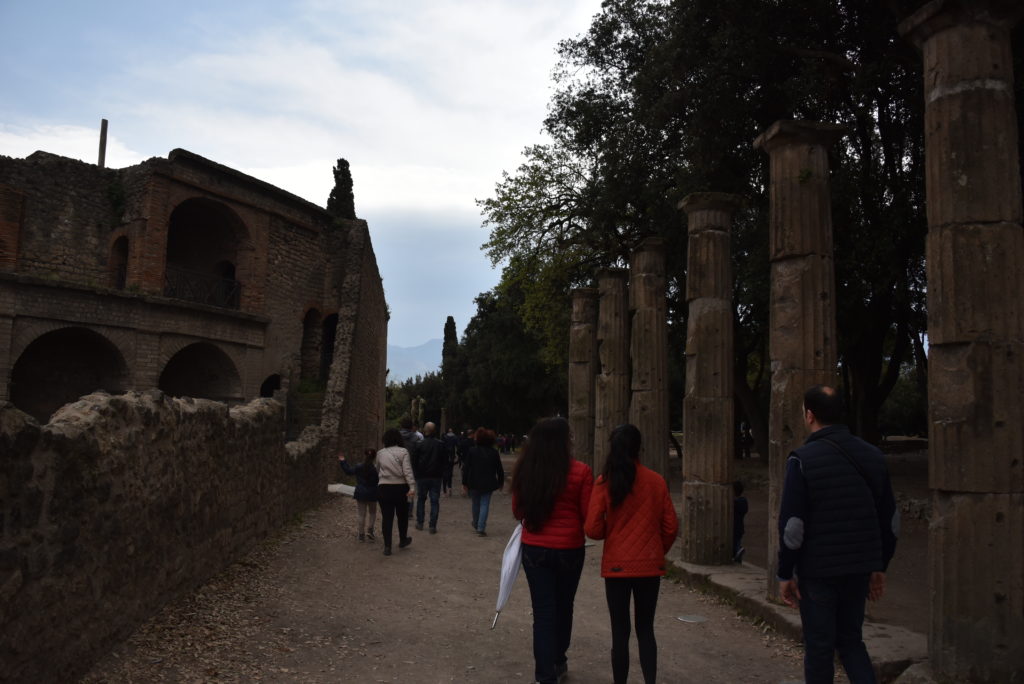
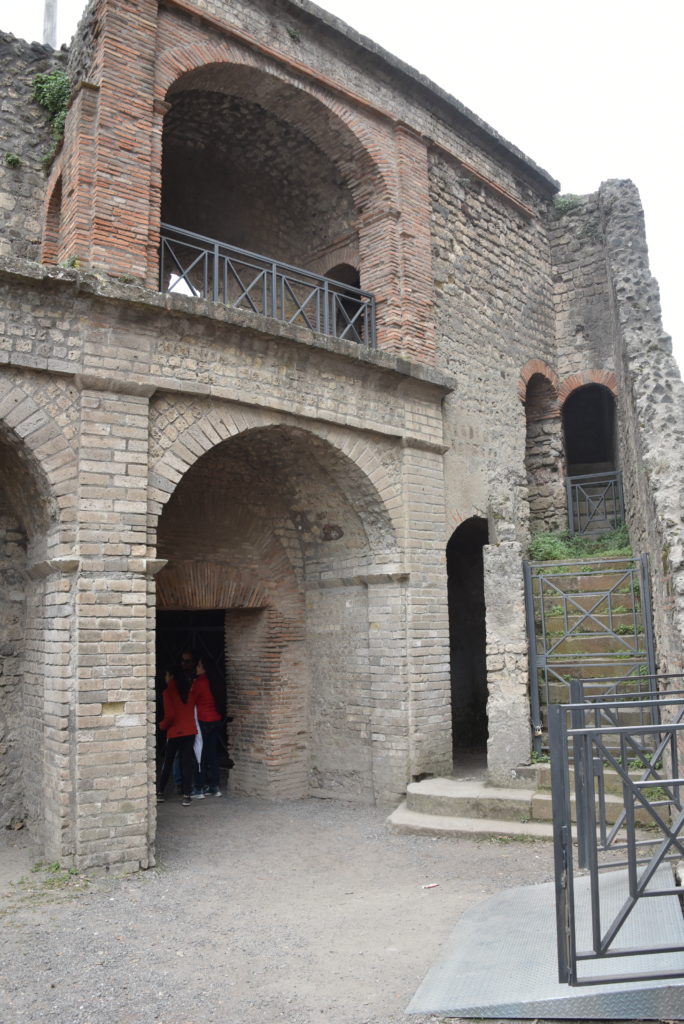
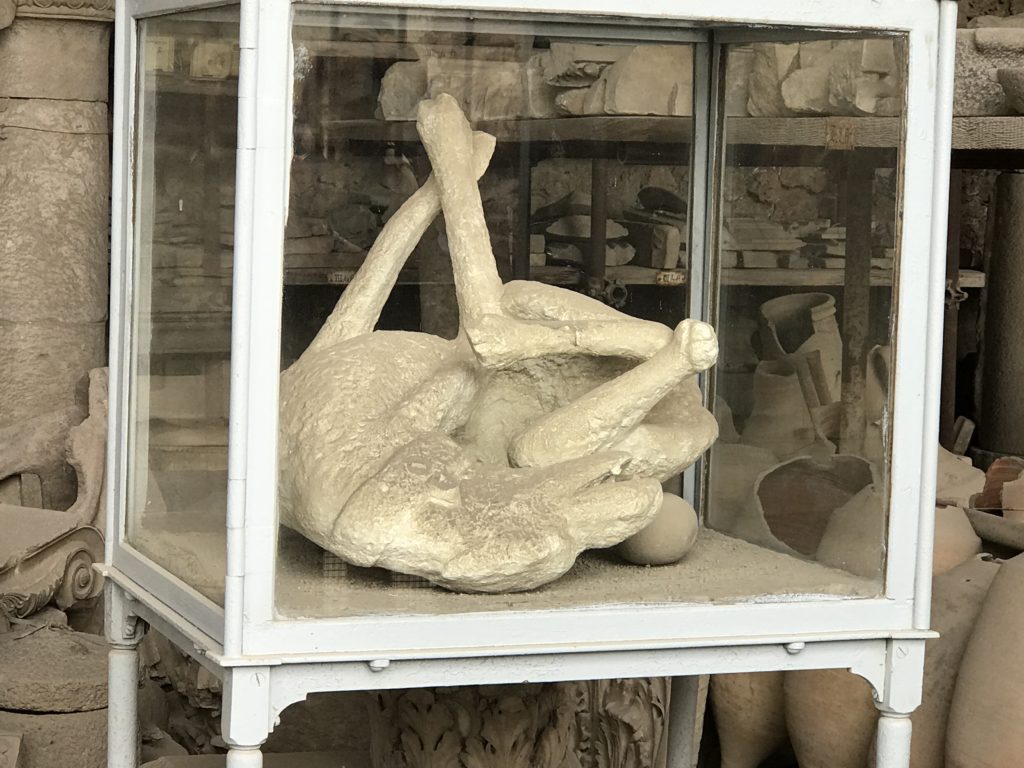
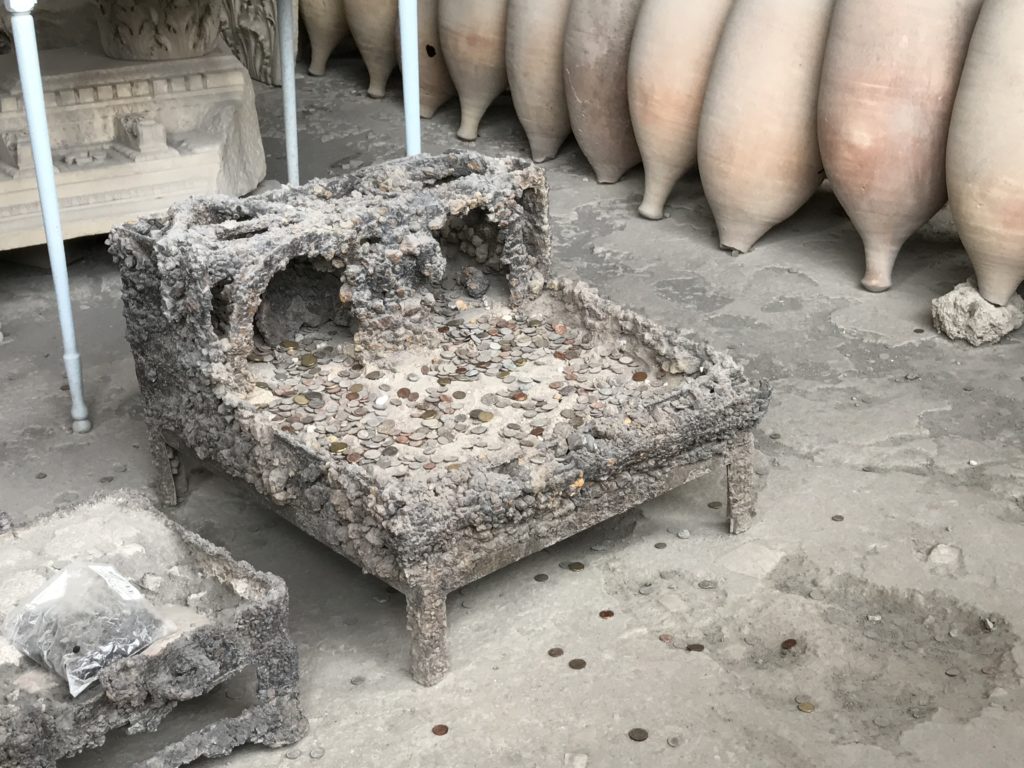
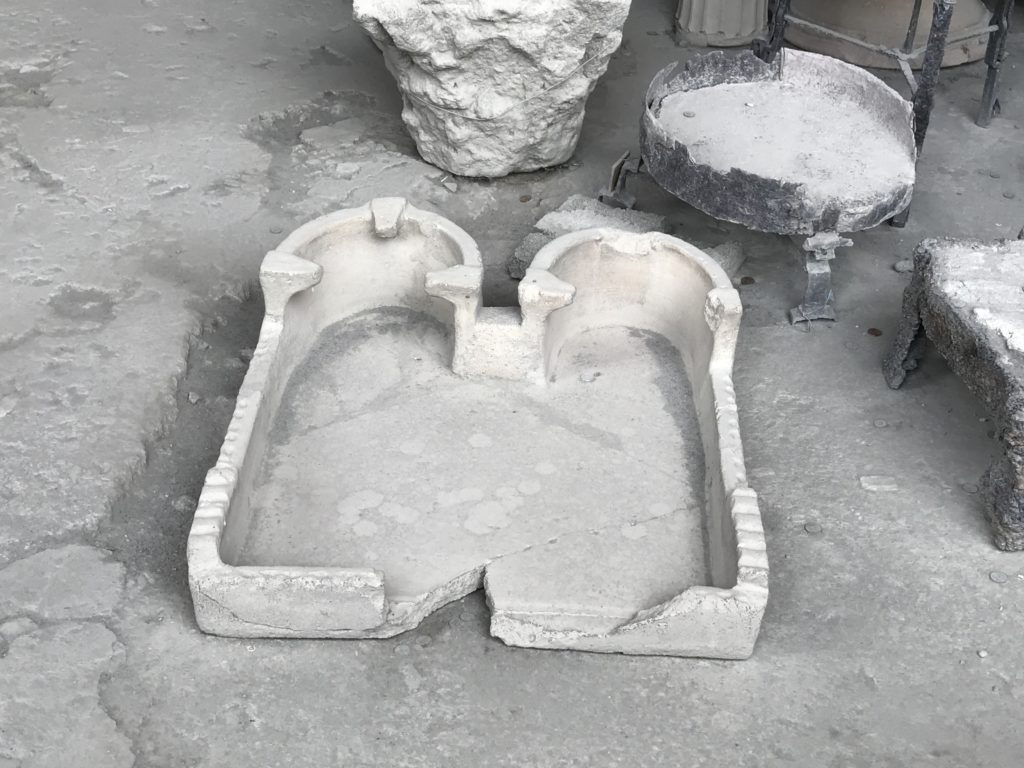
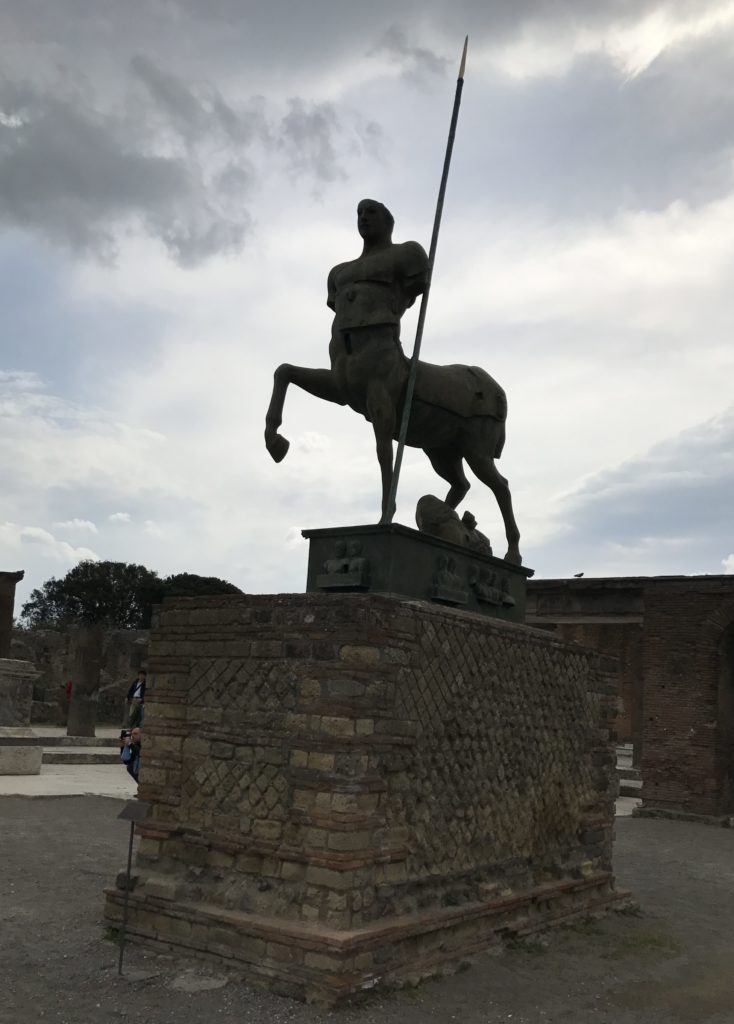
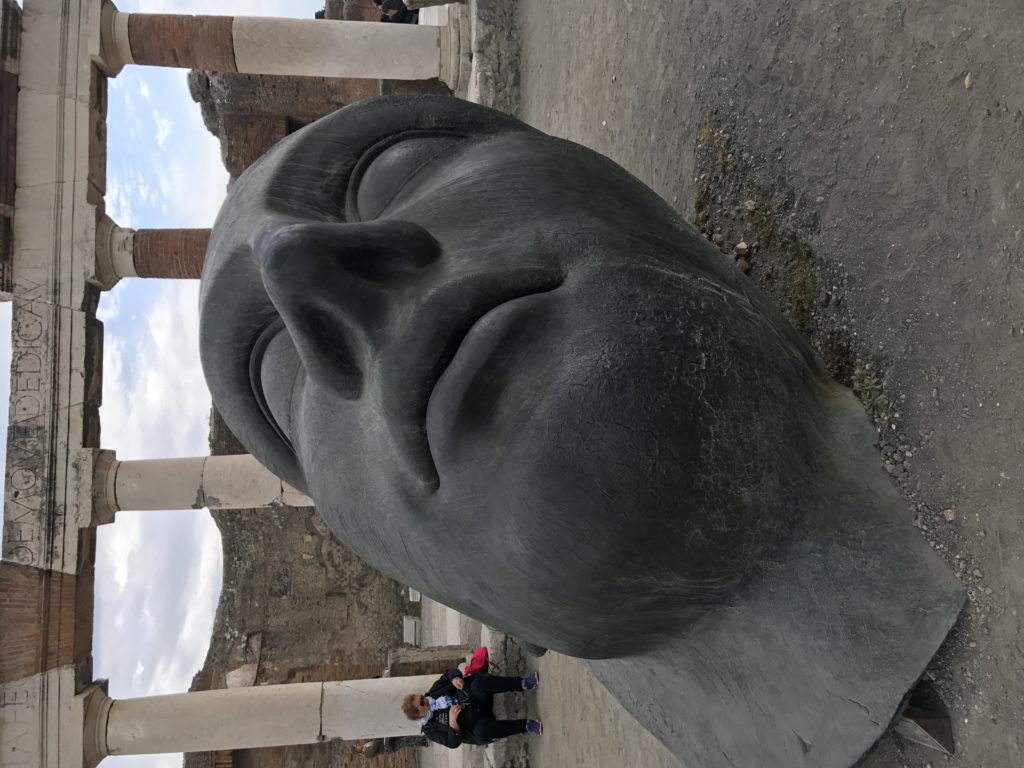
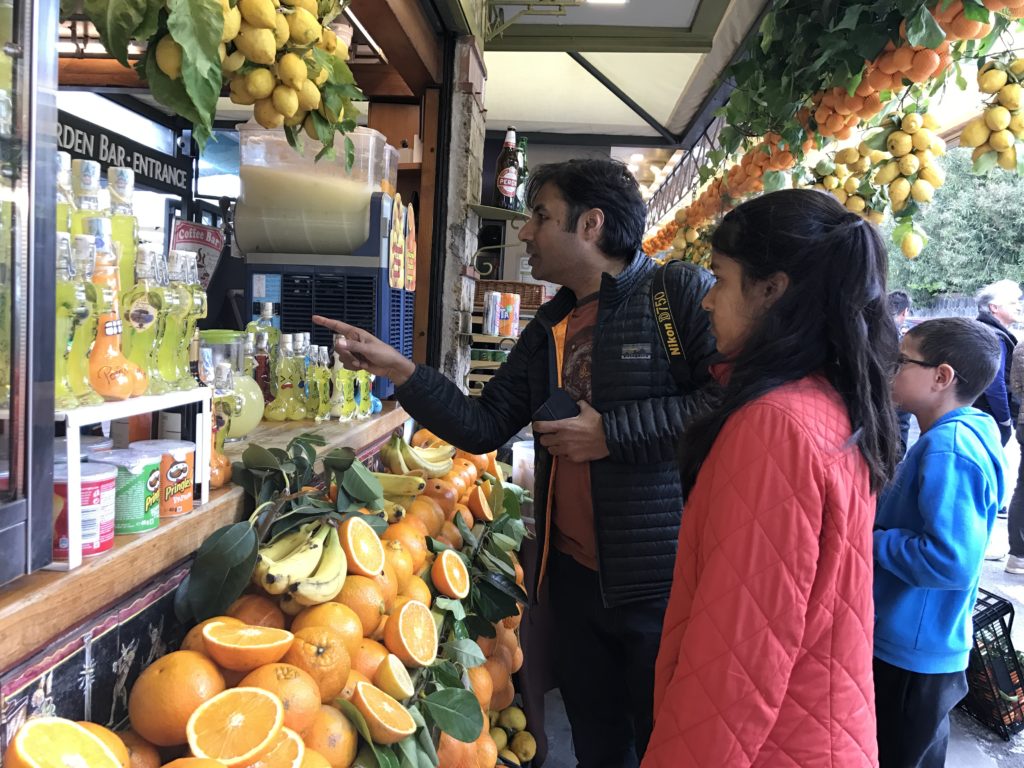
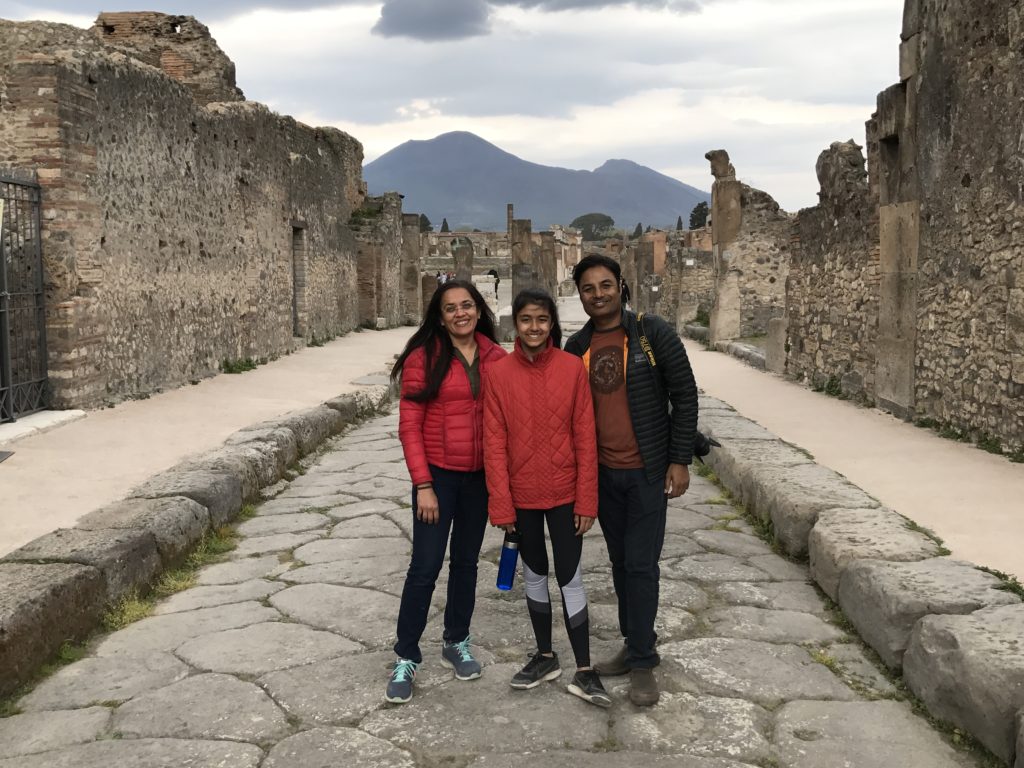
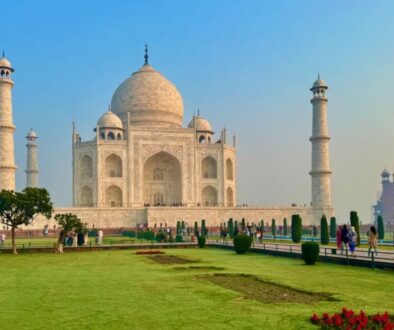



Greg
December 4, 2019 @ 4:19 pm
I was in Pompeii and loved it. I recommend everyone visit this place.
Jyoti
December 5, 2019 @ 5:08 am
Thanks and I couldn’t agree more. Pompeii beautiful and has such fascinating stories frozen in time.